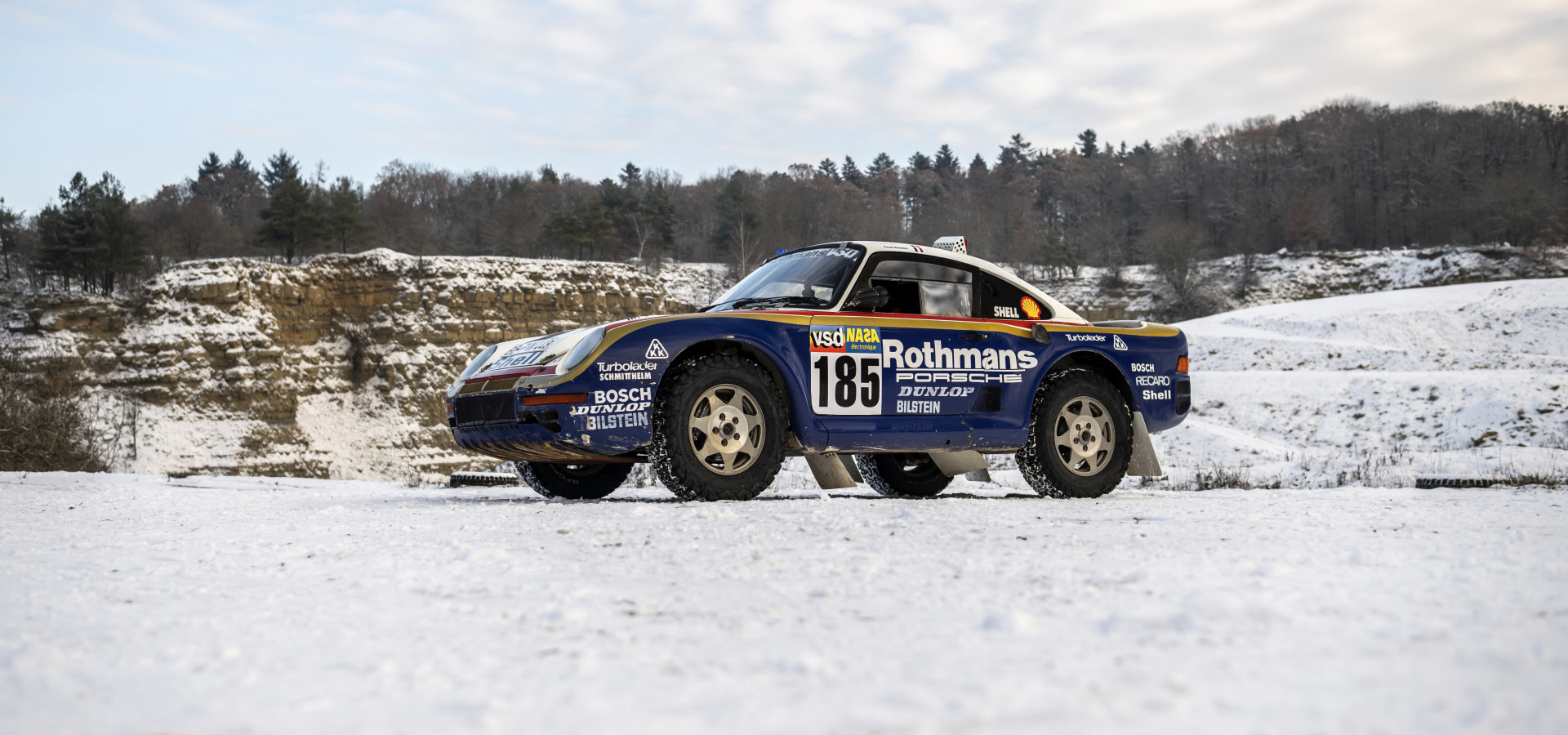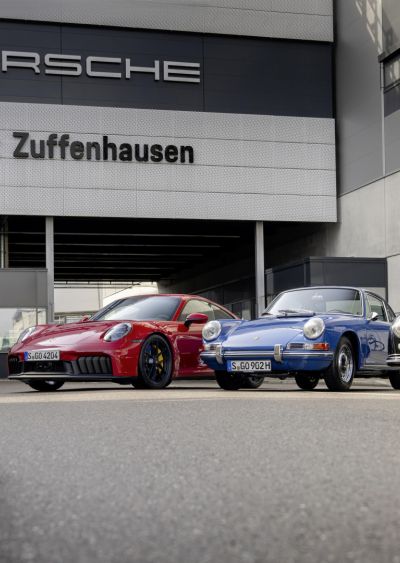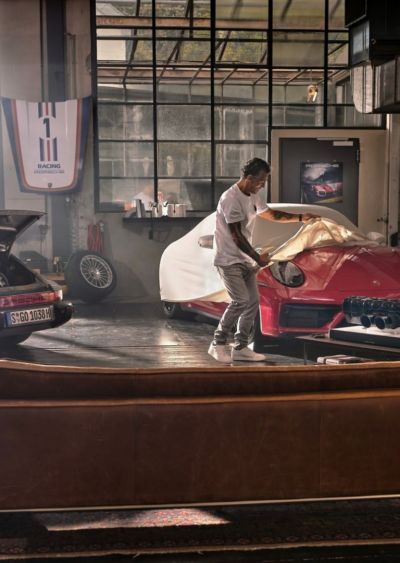The recommissioning has been carried out over the past few months by the Porsche Heritage and Museum team together with their colleagues from Porsche Classic.
The 959 Paris Dakar Race History
The starting line-up of the Paris-Dakar Rally in 1986 was dominated by trucks and all-terrain vehicles. The three Porsche 959 cars from Zuffenhausen stood out – the third, a service car driven by project manager Roland Kussmaul and Wolf-Hendrik Unger, took sixth place. To this day, the Porsche Museum has preserved the complete trio as part of its collection. “The winning car remains untouched and we keep it in a kind of time capsule, so to speak, with all of the physical traces of the rally preserved for as long as possible,” explains Kuno Werner, Head of the Museum Workshop.

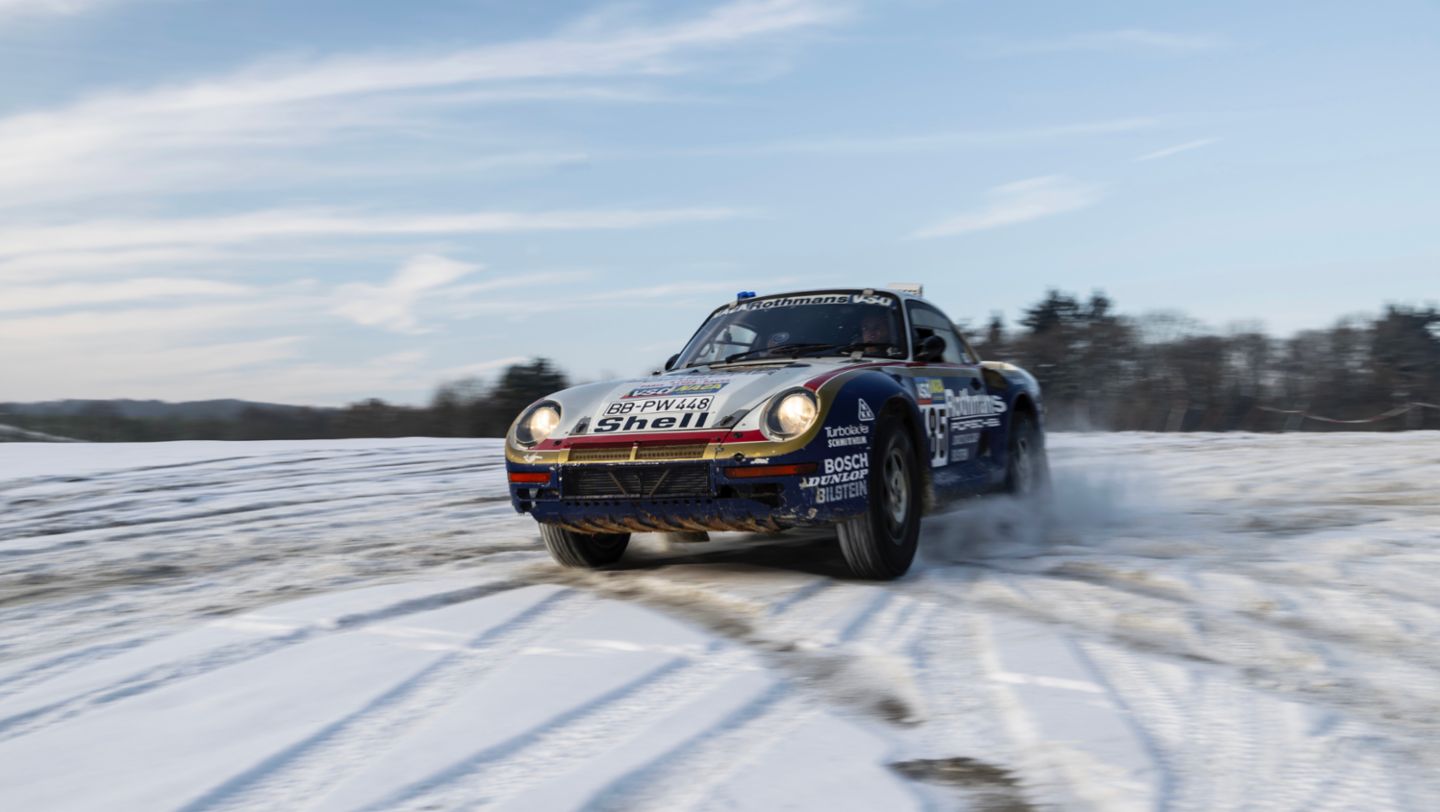
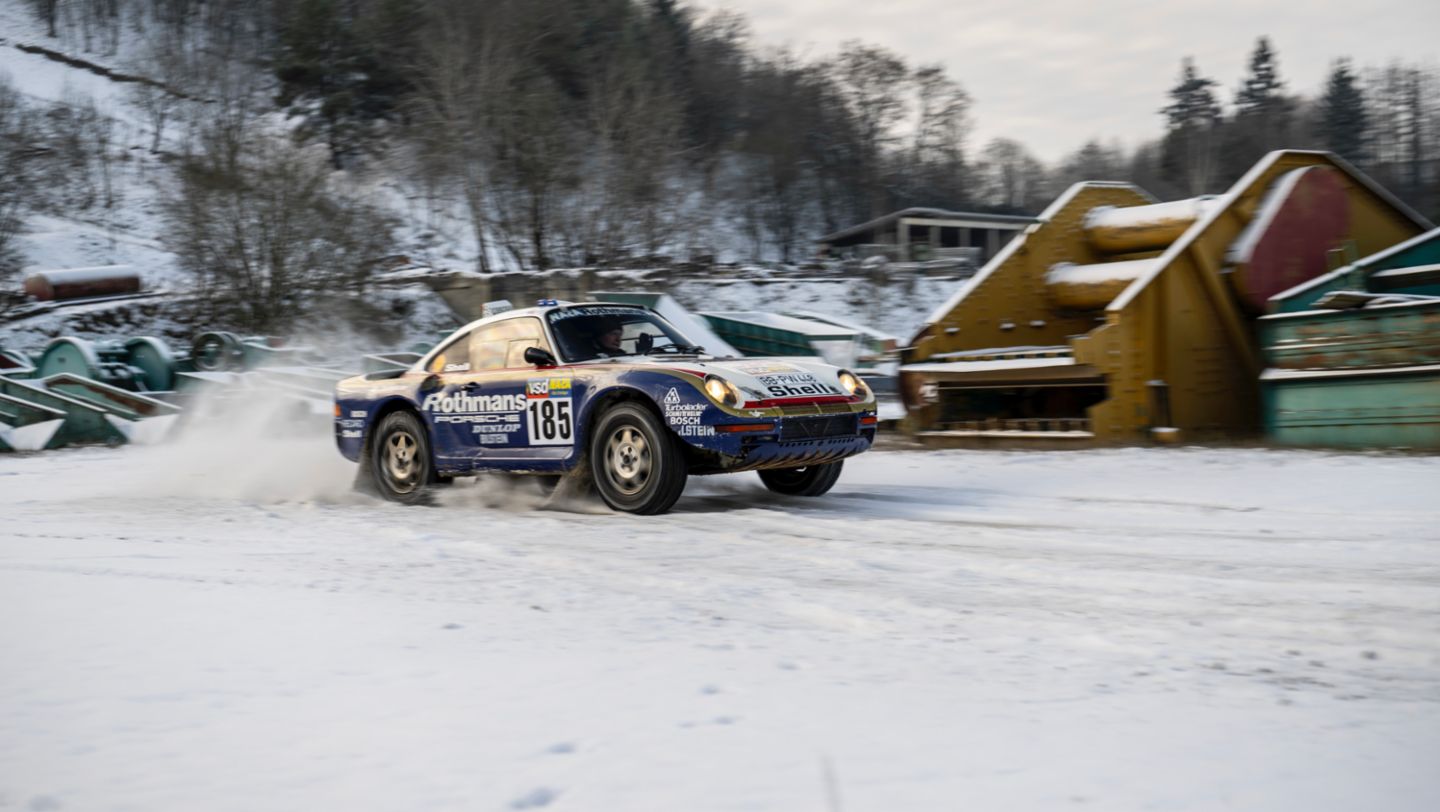
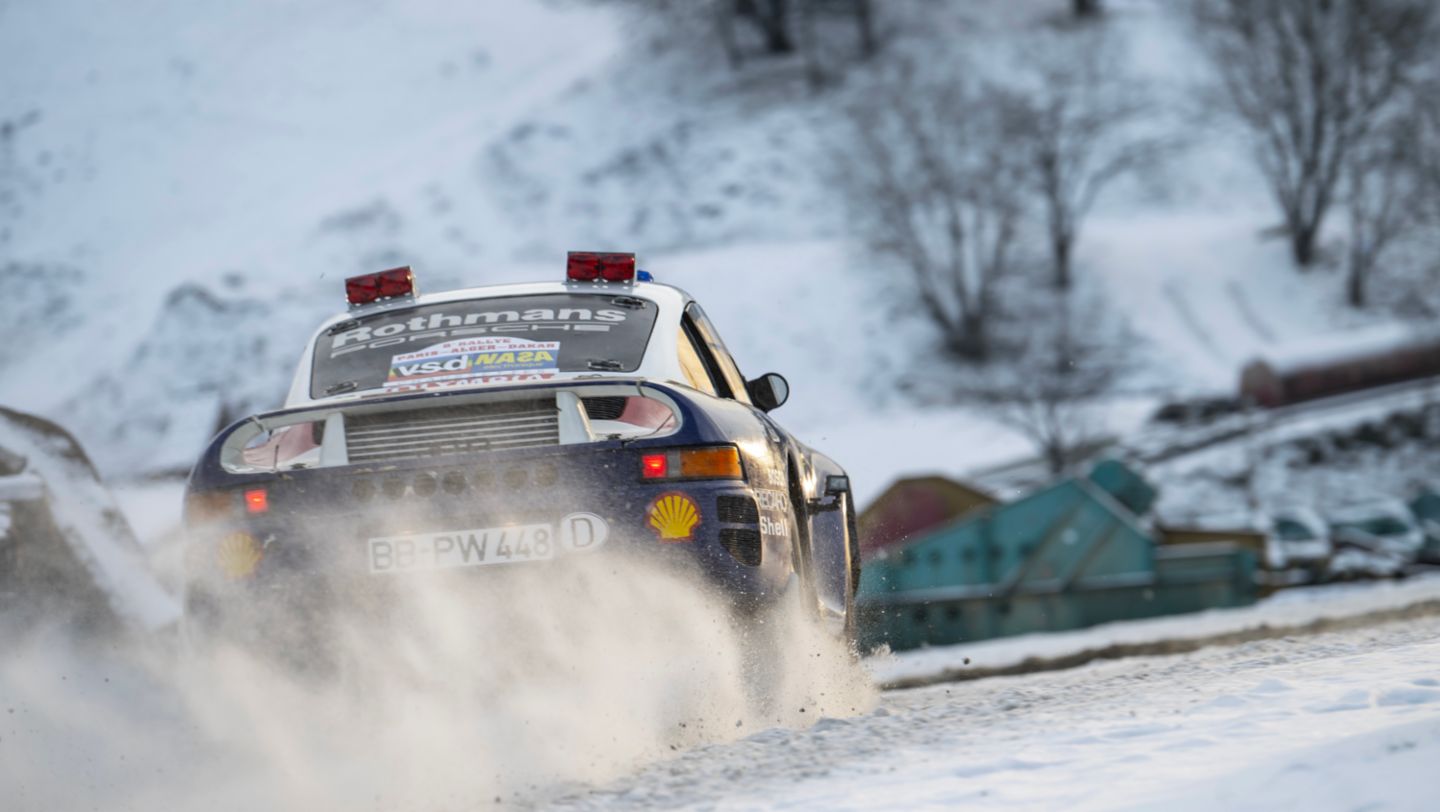
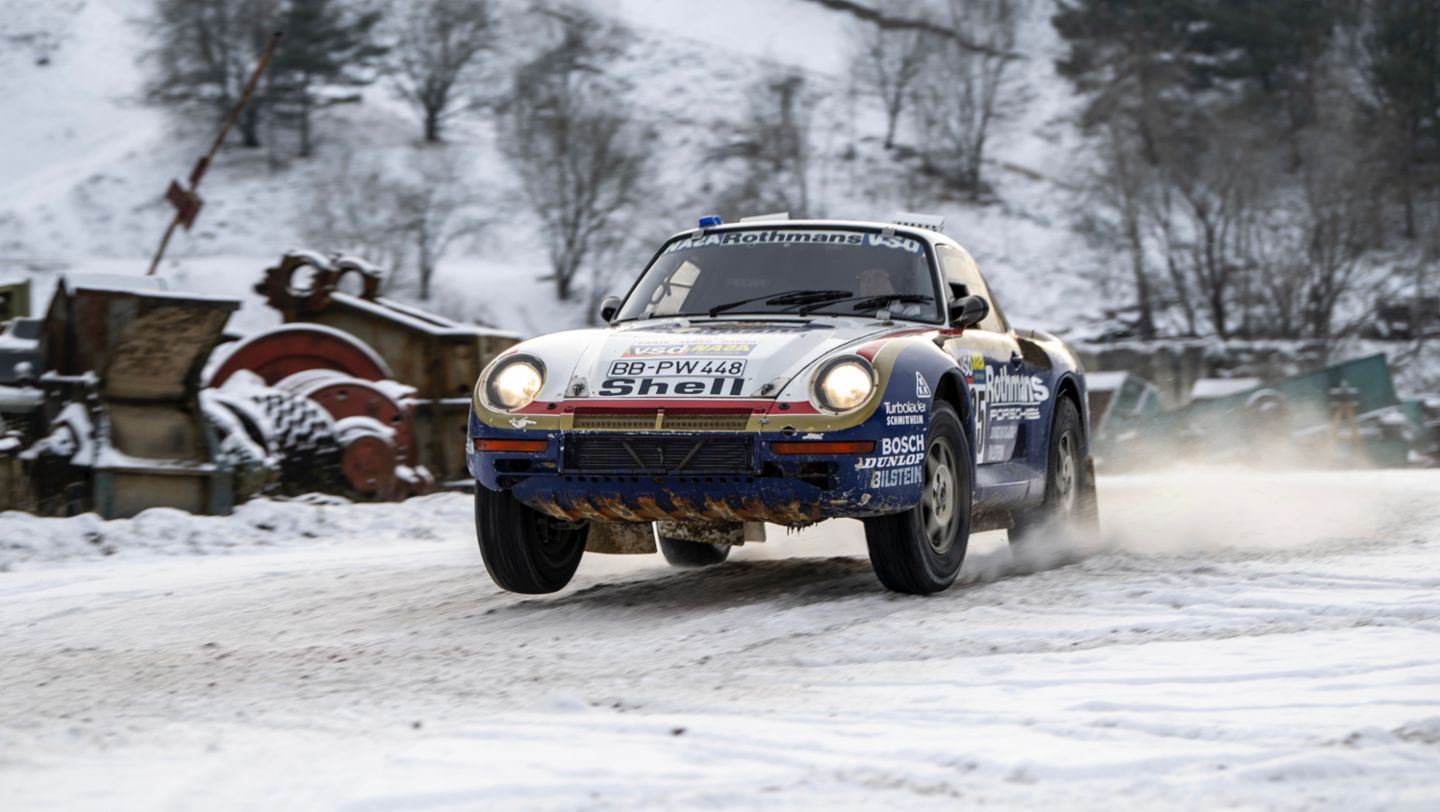
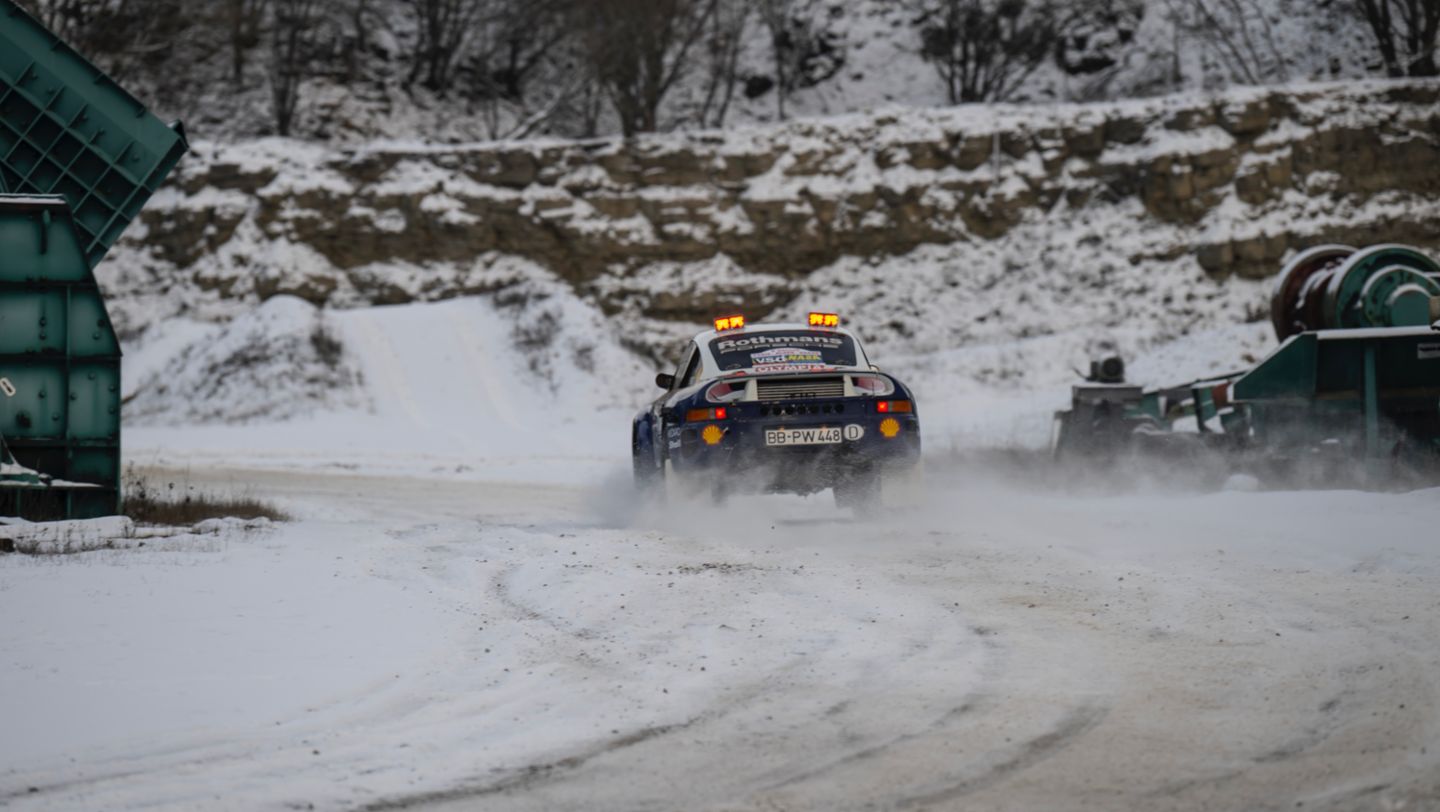
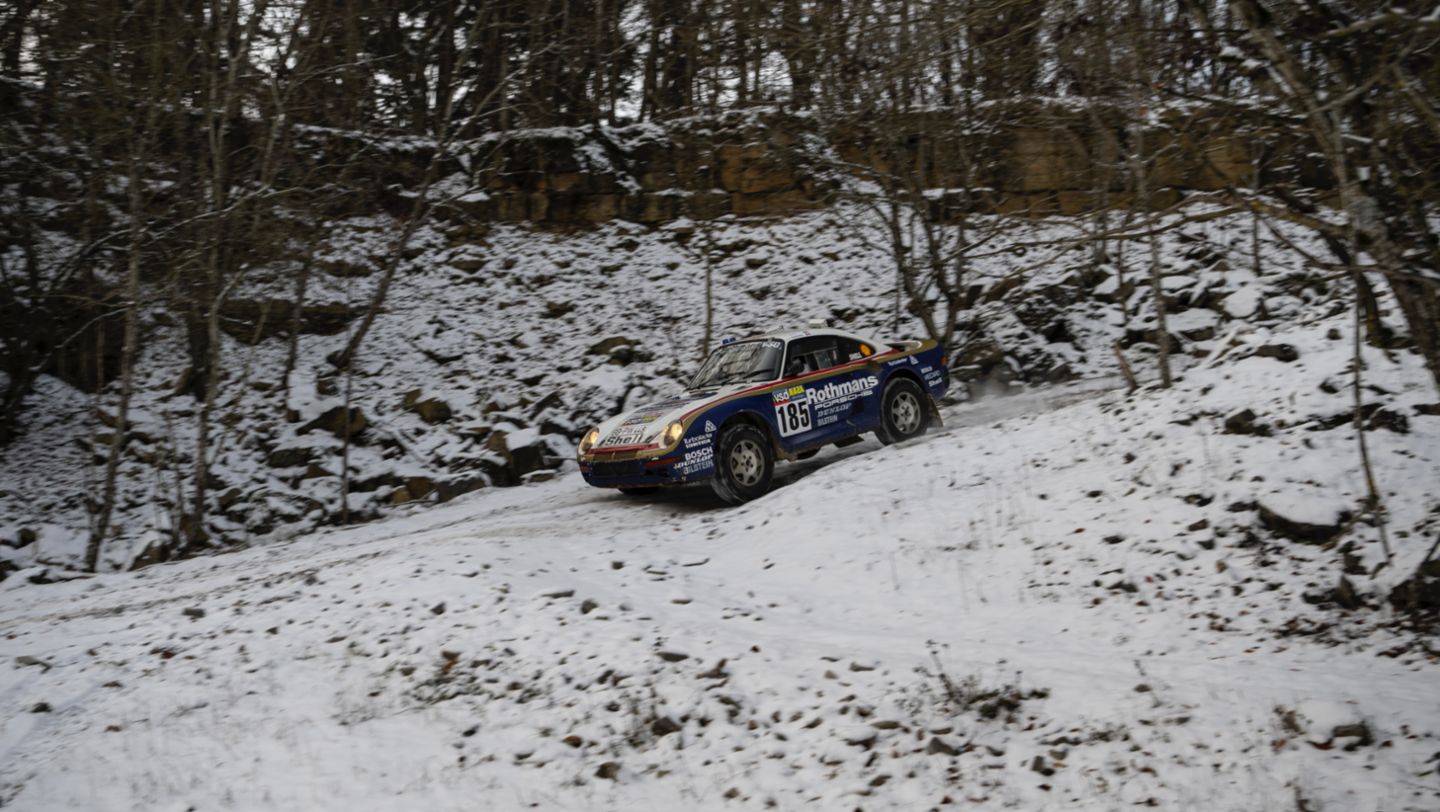
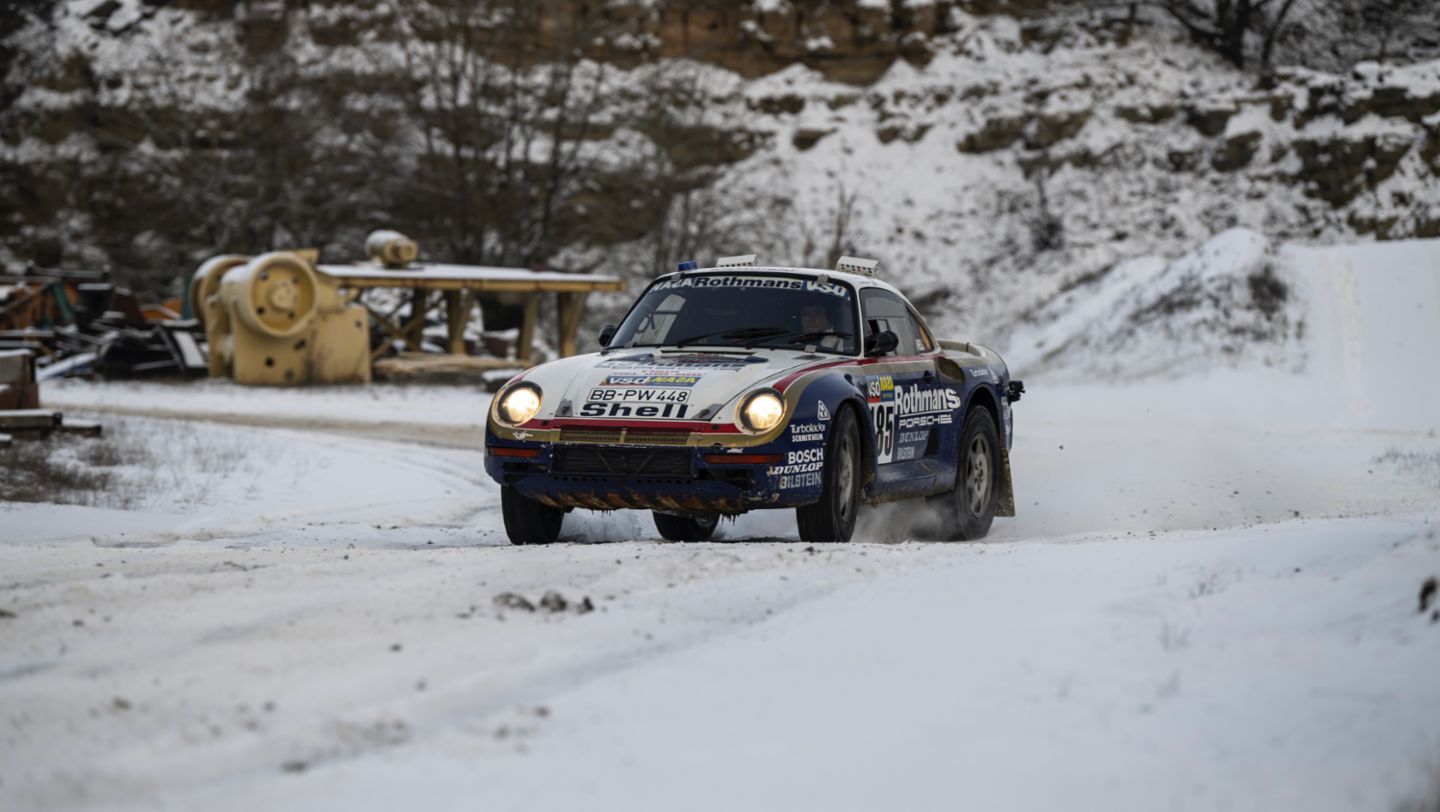
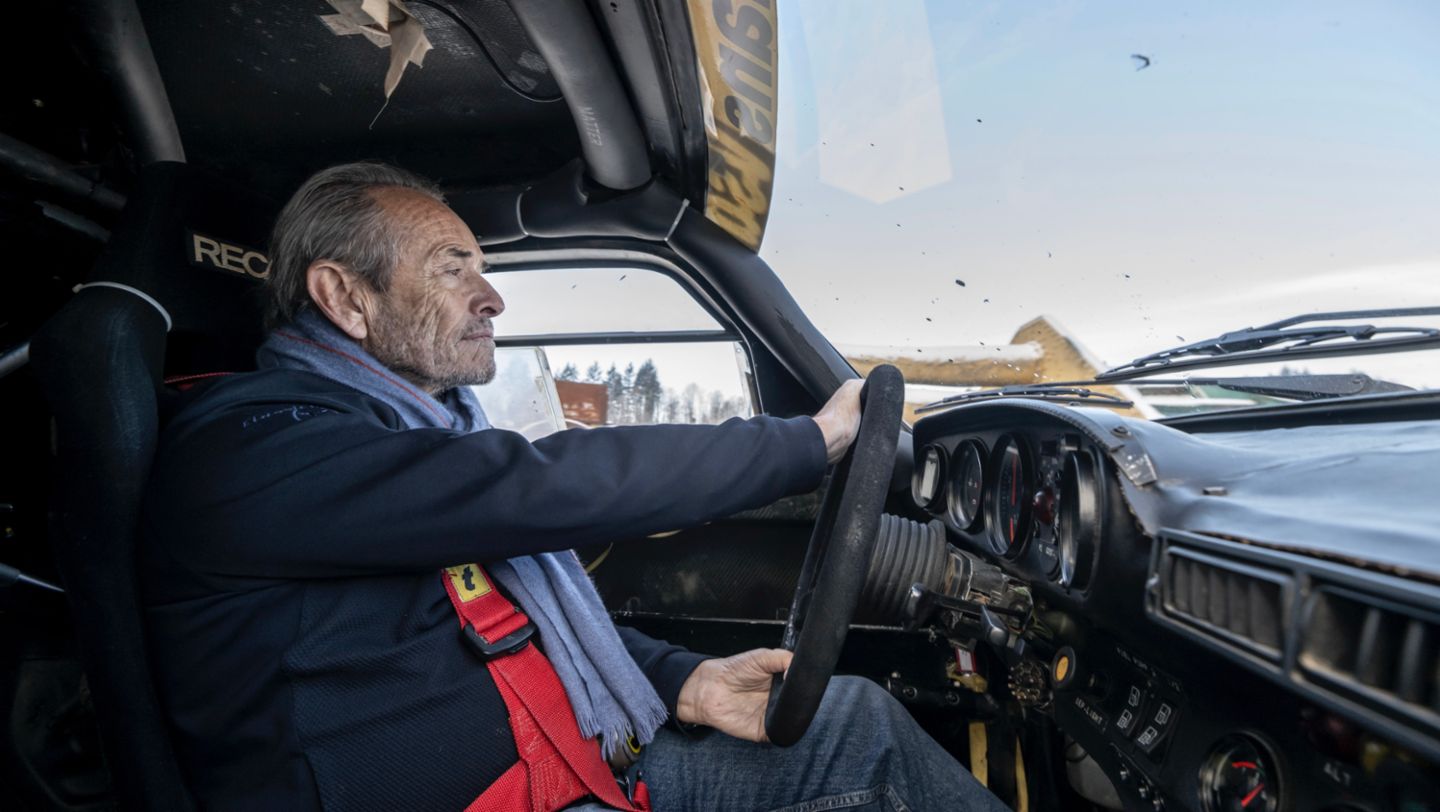
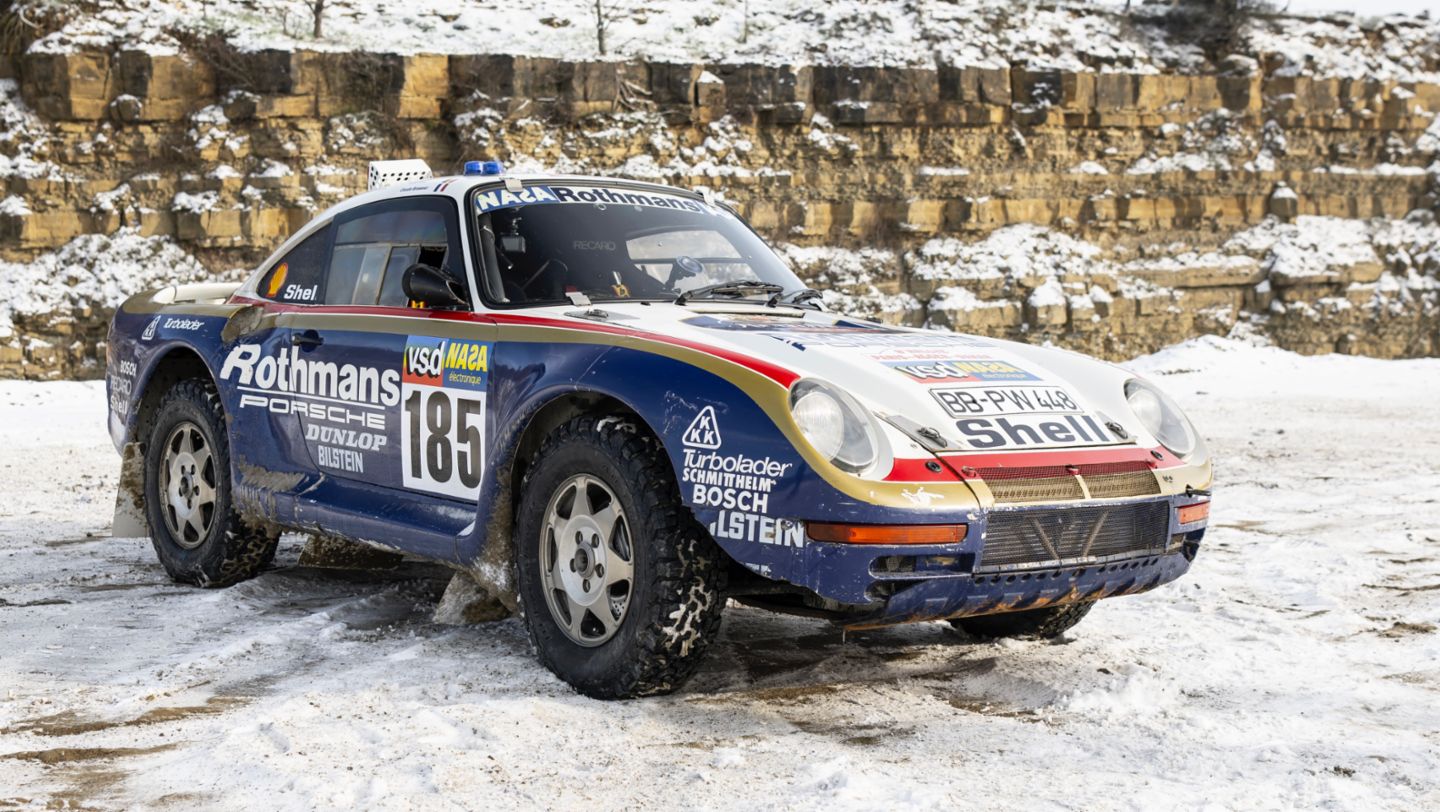
In the 1980s, the team spent two years transforming the 959 into a rally car. The engineers reinforced the suspension with double shock absorbers on the front axle and fitted all-terrain tyres. If the surface didn’t require all-wheel drive, the electro-hydraulically controlled centre differential distributed the power variably between the front and rear axles. As a result, the Porsche is able to reach speeds of up to 210 km/h.
Racing director Peter Falk recalls the first three rallies: 1984 with the Porsche 953 and the following two years with the 959 Paris-Dakar: “It was really great that we got all the cars across the finish line and won the race at our first attempt. Then Mr Bott said: ‘We have to go again, once isn’t enough.’ Then, in 1985, all three of our cars dropped out of the race. That was devastating. After that we were determined to race again. Even though we were all a bit sick of the whole thing after losing everything. Then in 1986 we did it again. All three cars finished and we had a 1-2 victory.”
Overhaul: telling the story of the car authentically
“We want to keep the original condition and only lightly overhaul the car while eliminating any technical flaws,” says Werner. Because the second-placed car from 1986 was still in very good shape, those responsible for the recommissioning managed to replace as little as possible while keeping the maximum number of original parts. There were around 18,000 kilometres on the clock of the 959 Paris-Dakar – the length of the rally plus a few thousand kilometres on top. Like its series production counterpart, the rally car was also powered by an air-/water-cooled flat-six engine with compound turbocharging. Due to the low-quality fuel, the output of the six-cylinder engine was reduced to 294 kW (400 PS).
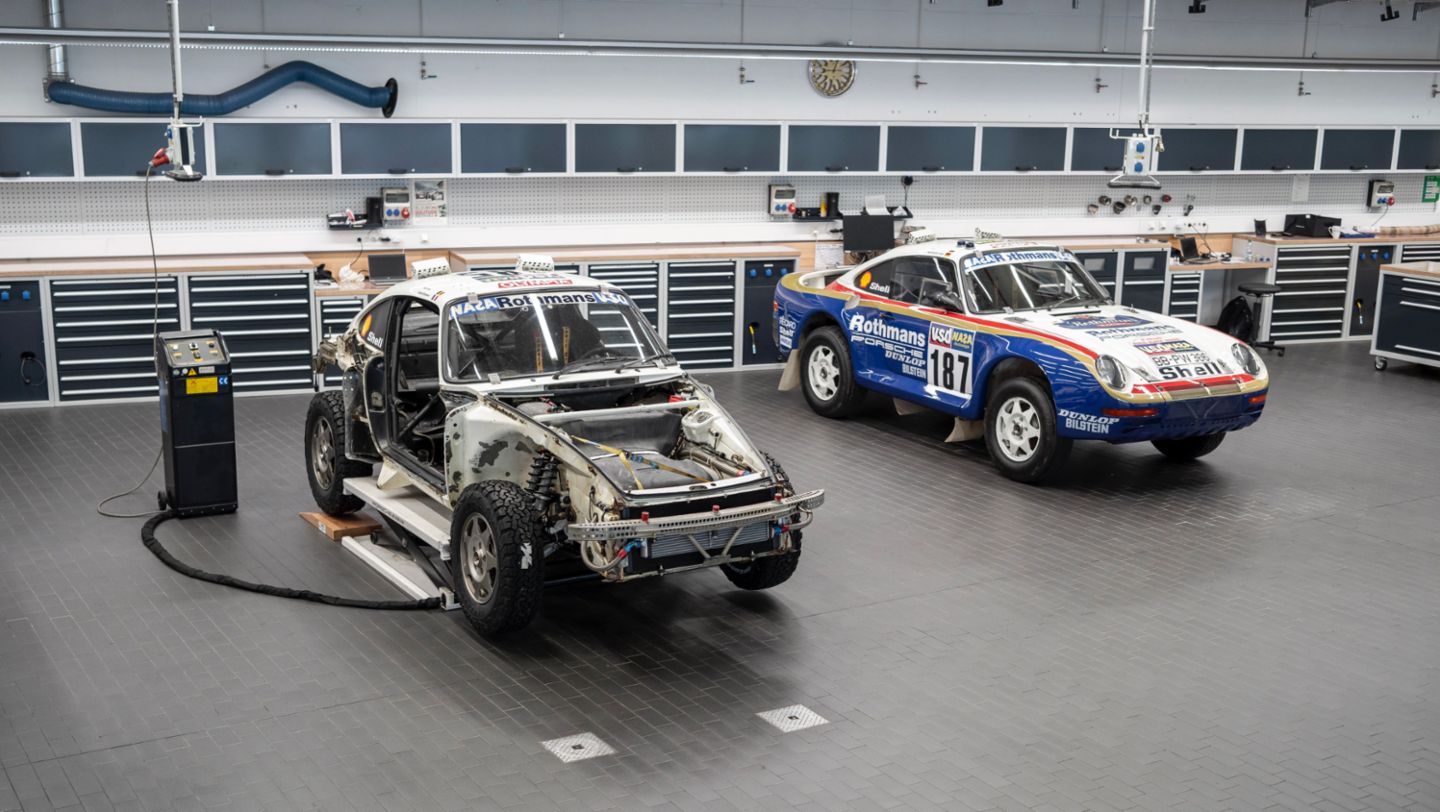
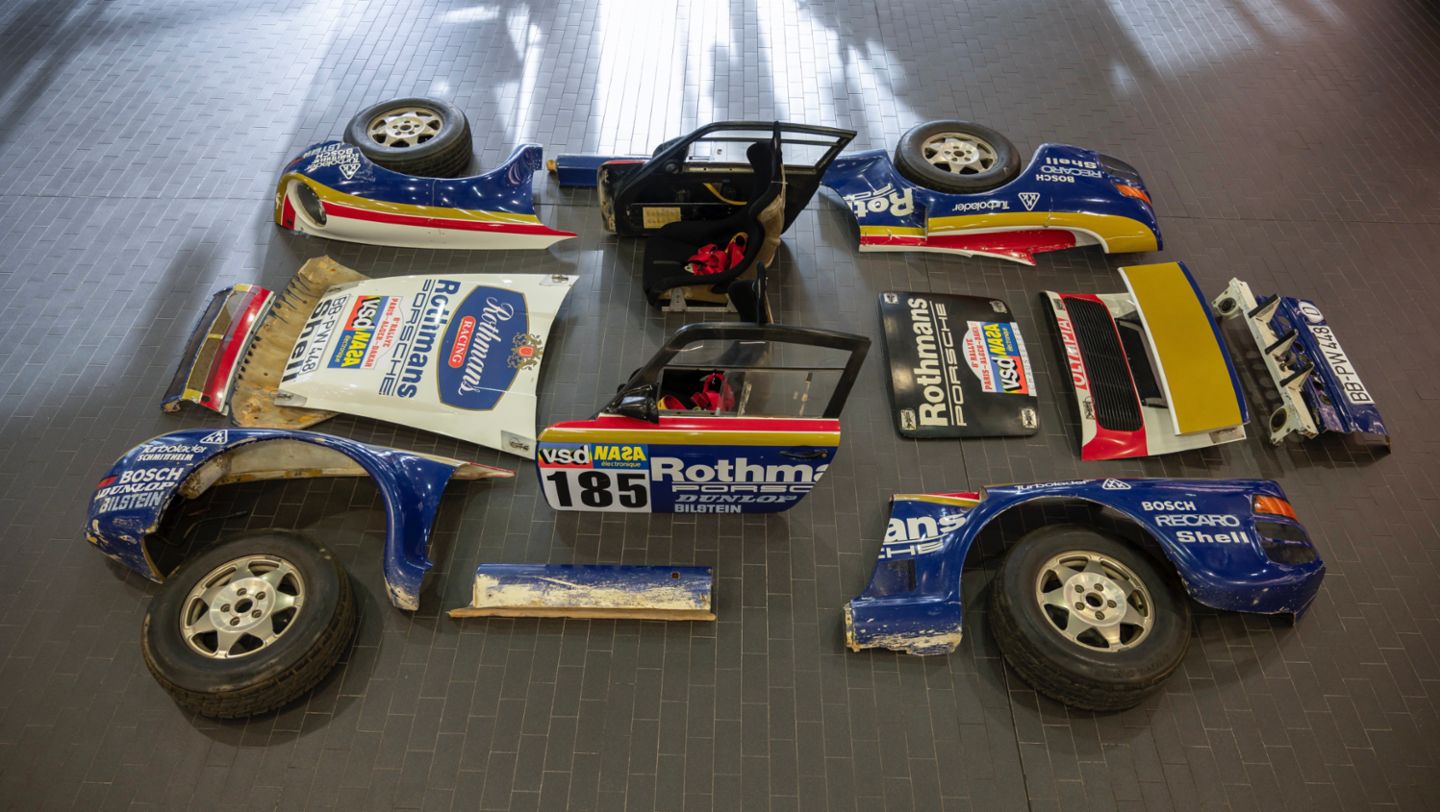
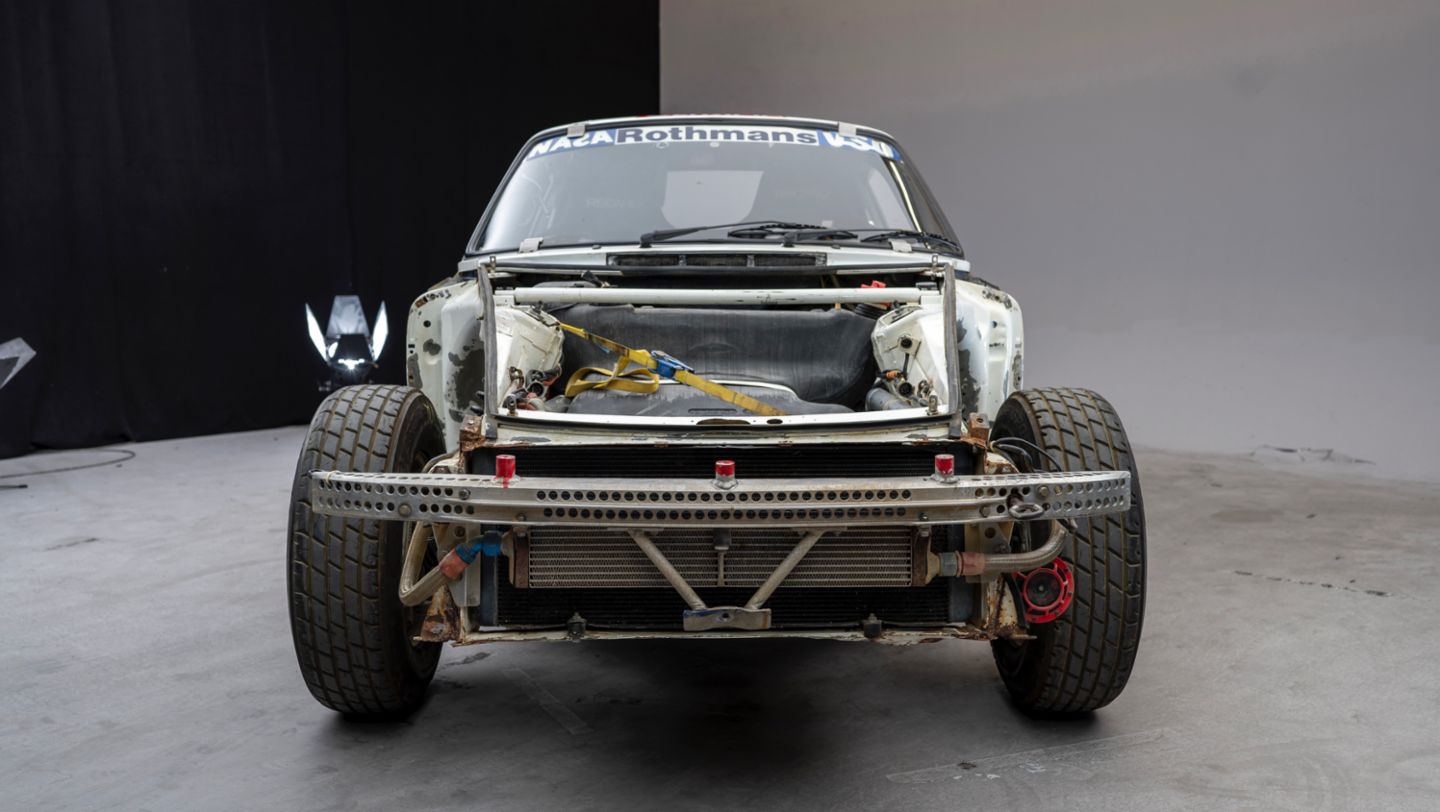
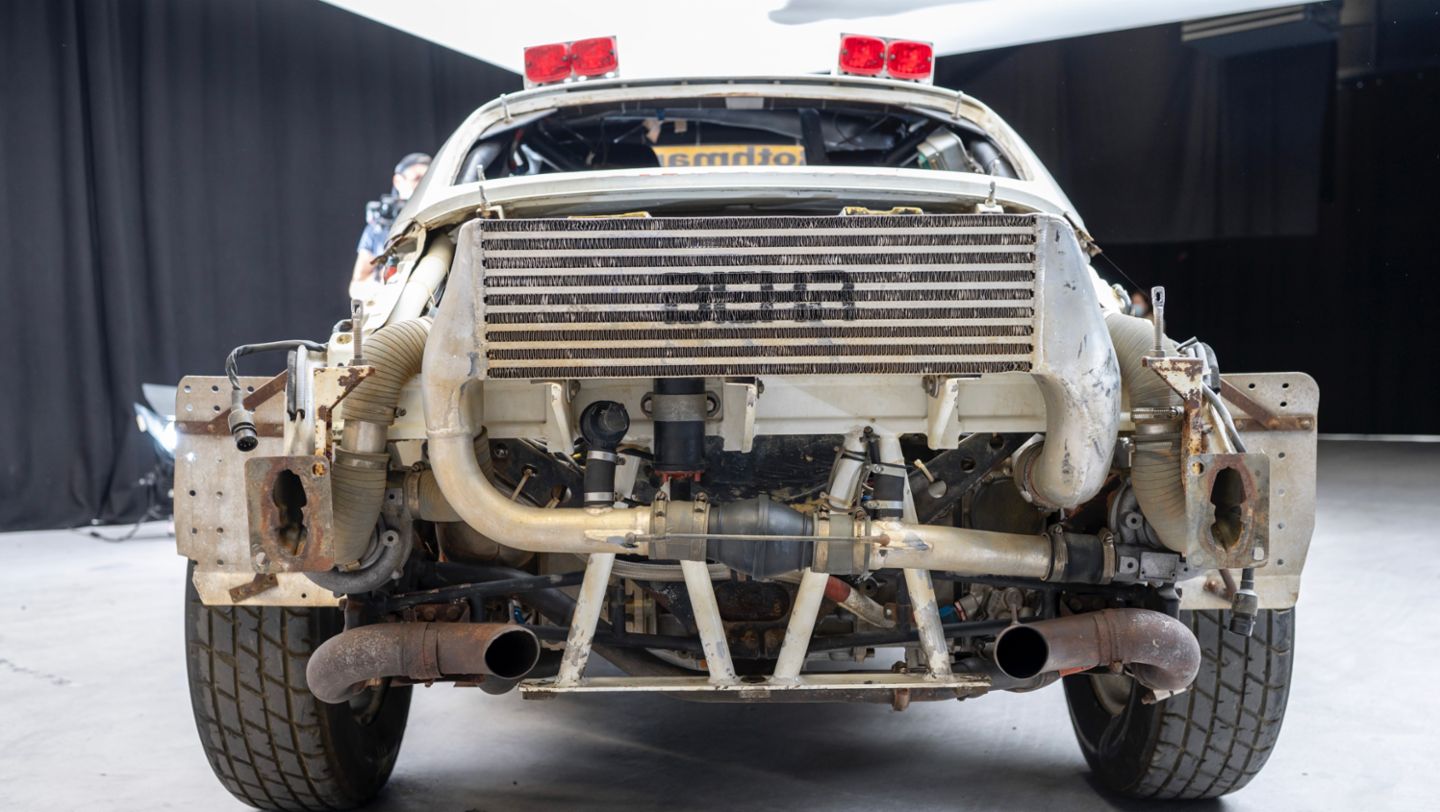

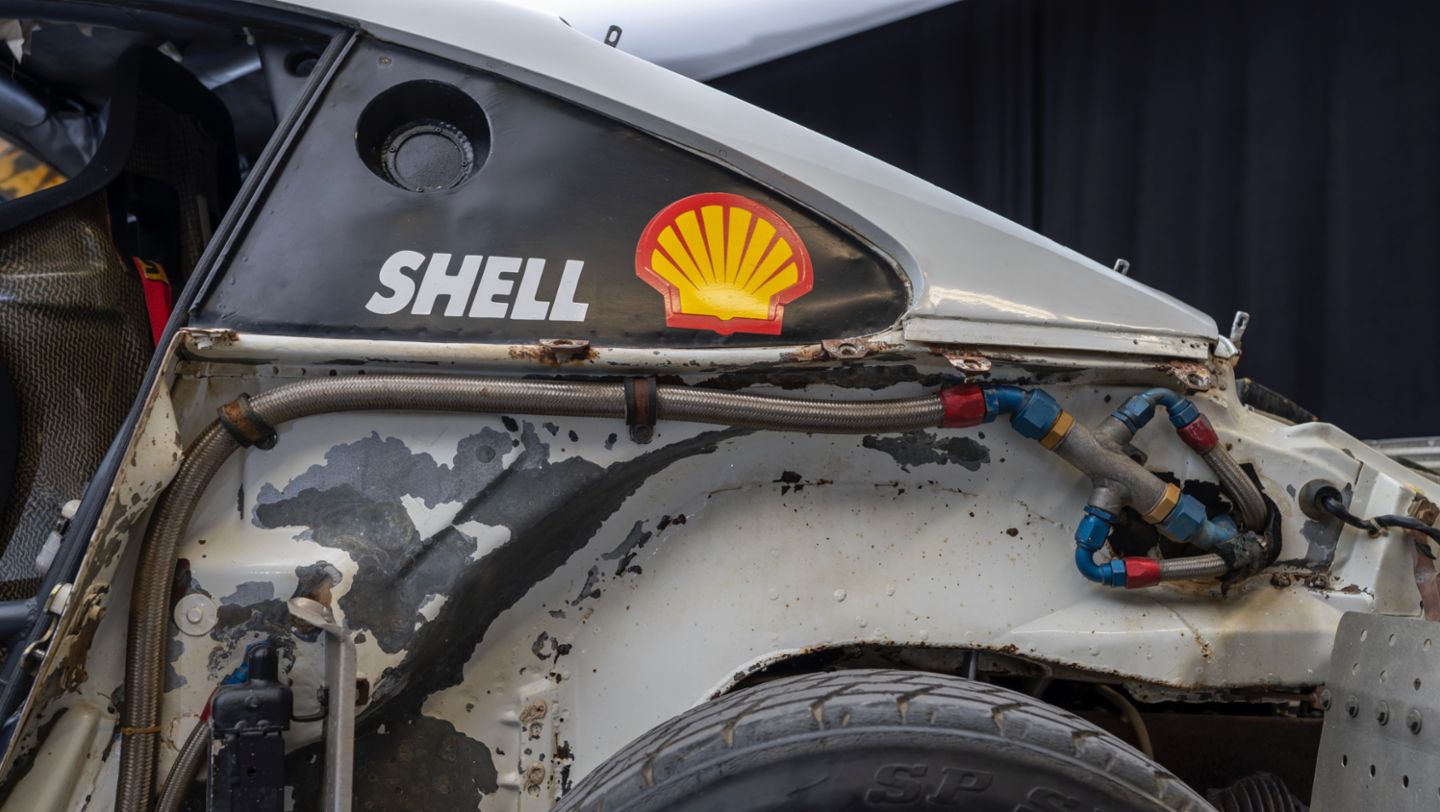
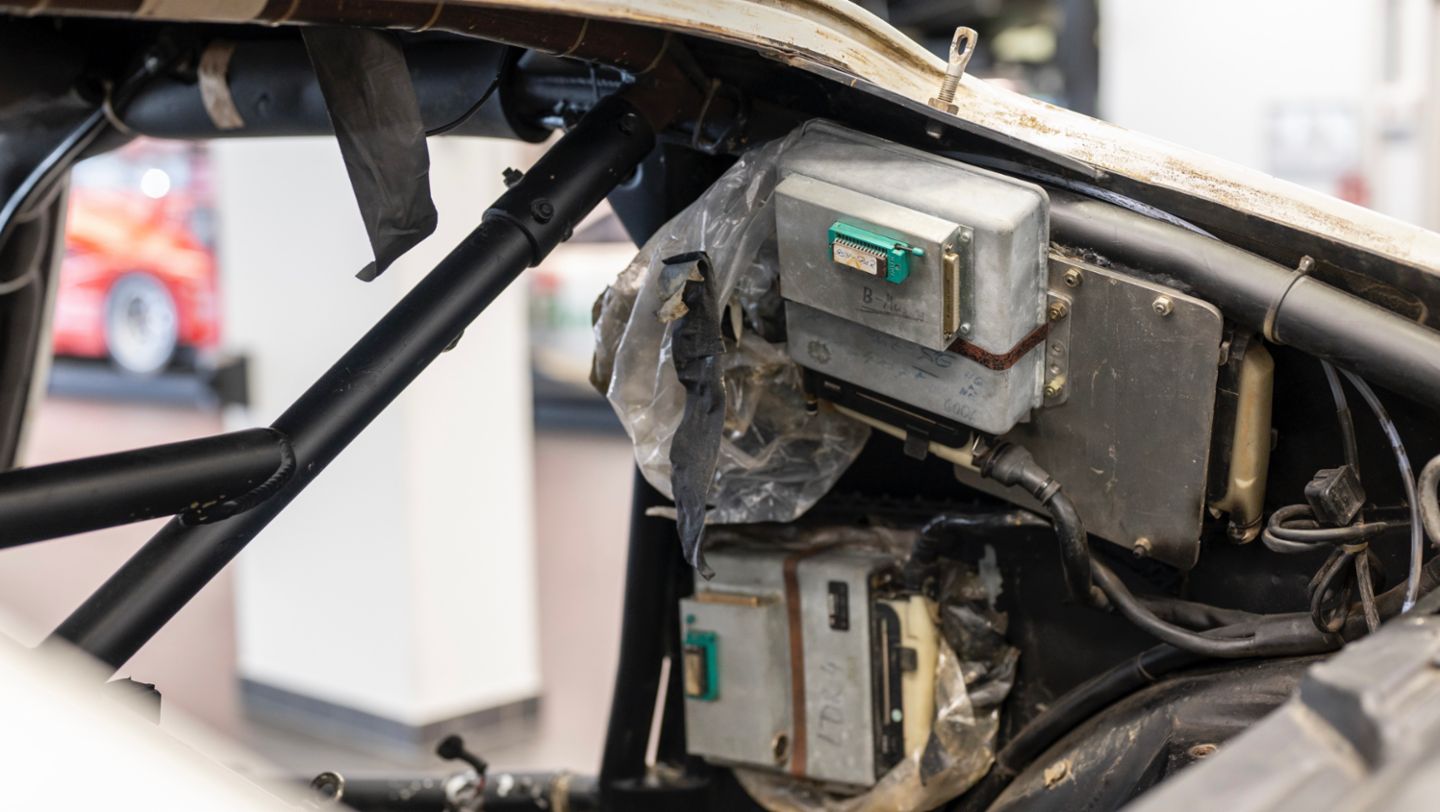
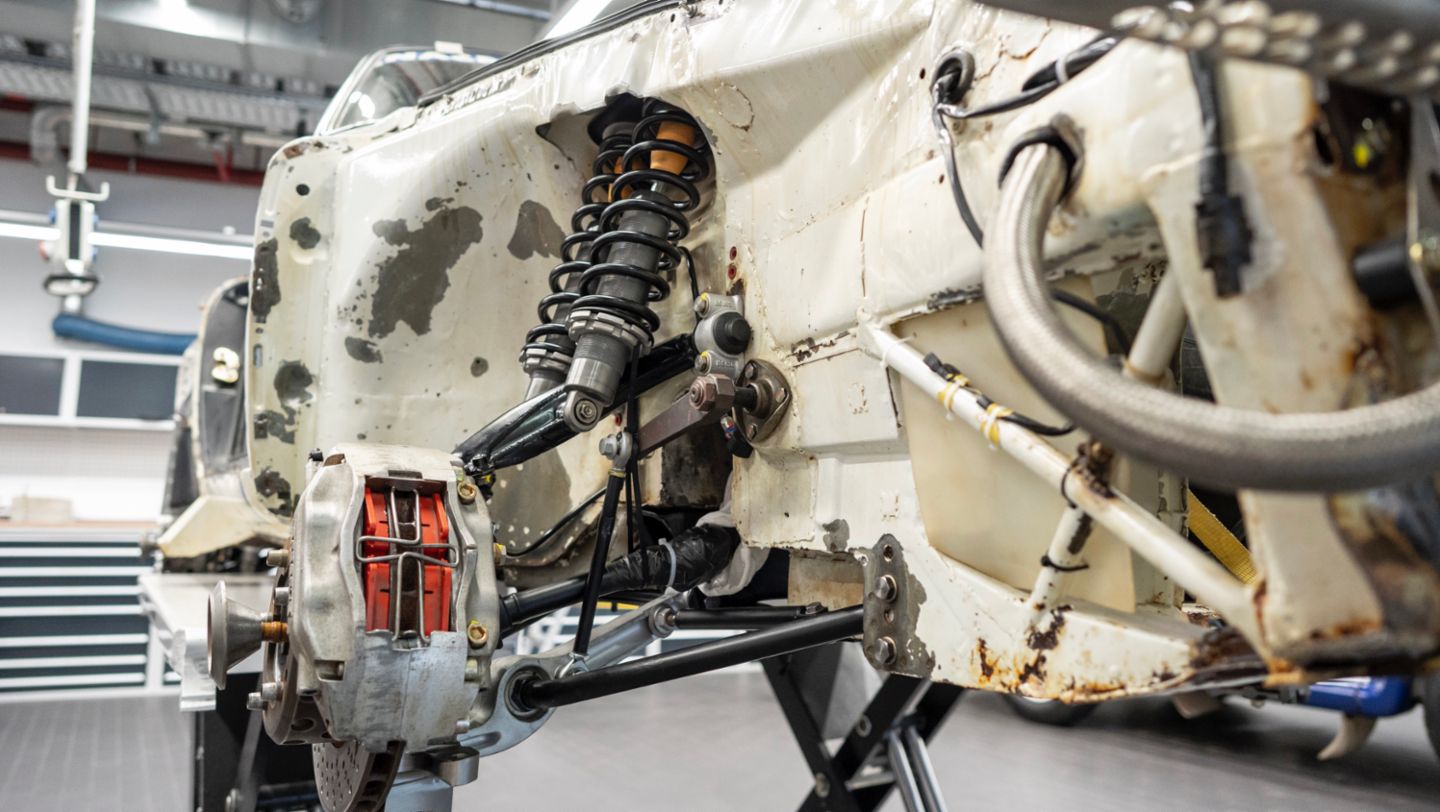
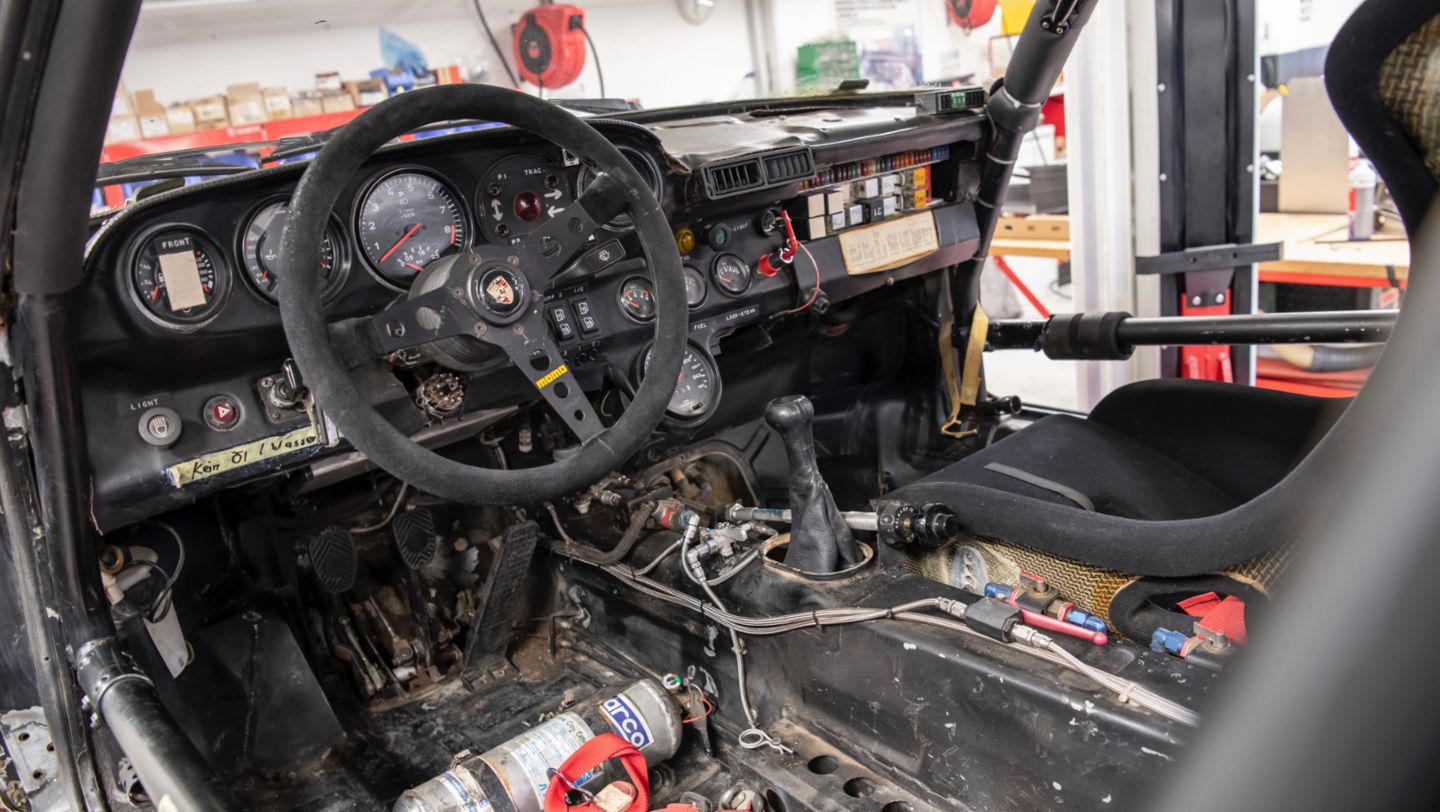
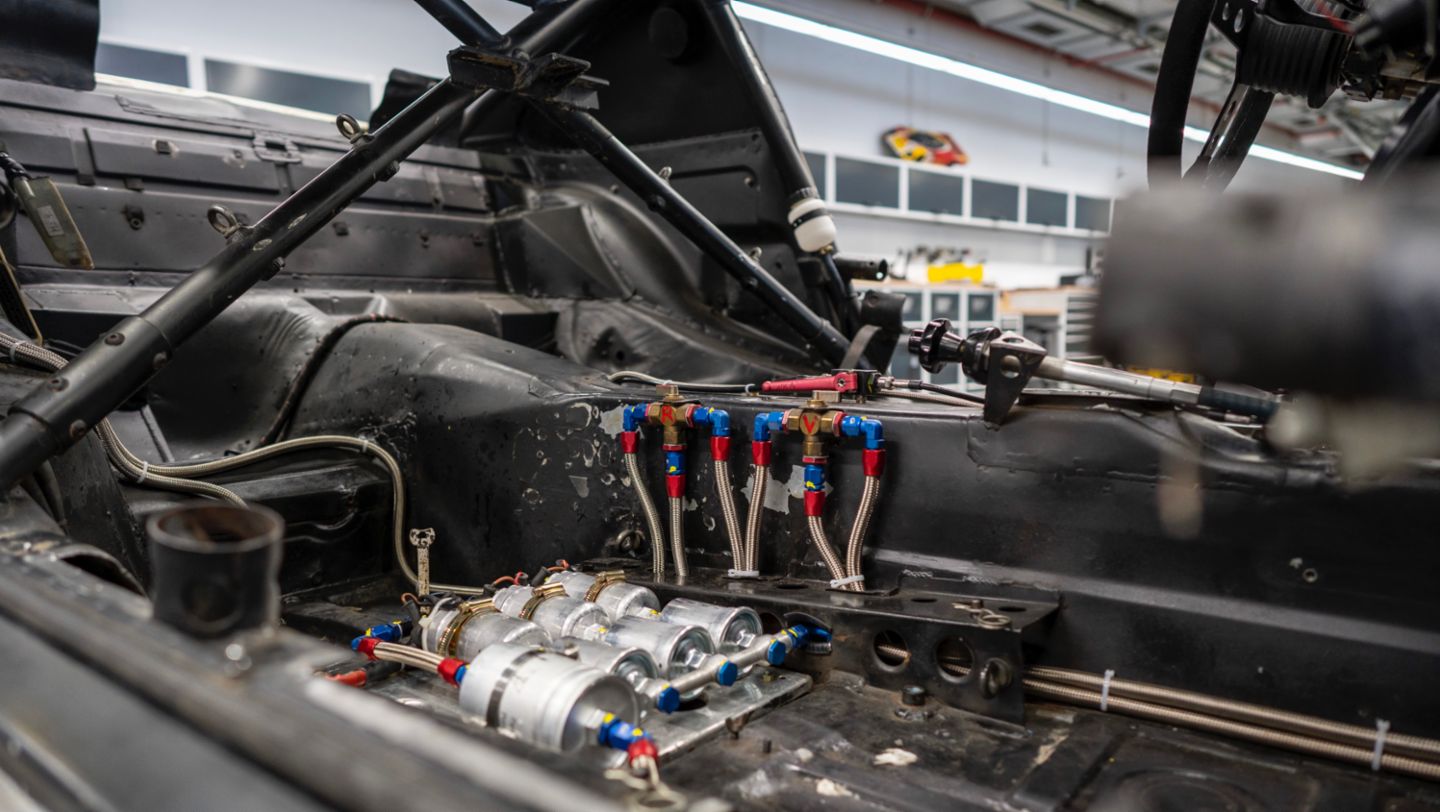

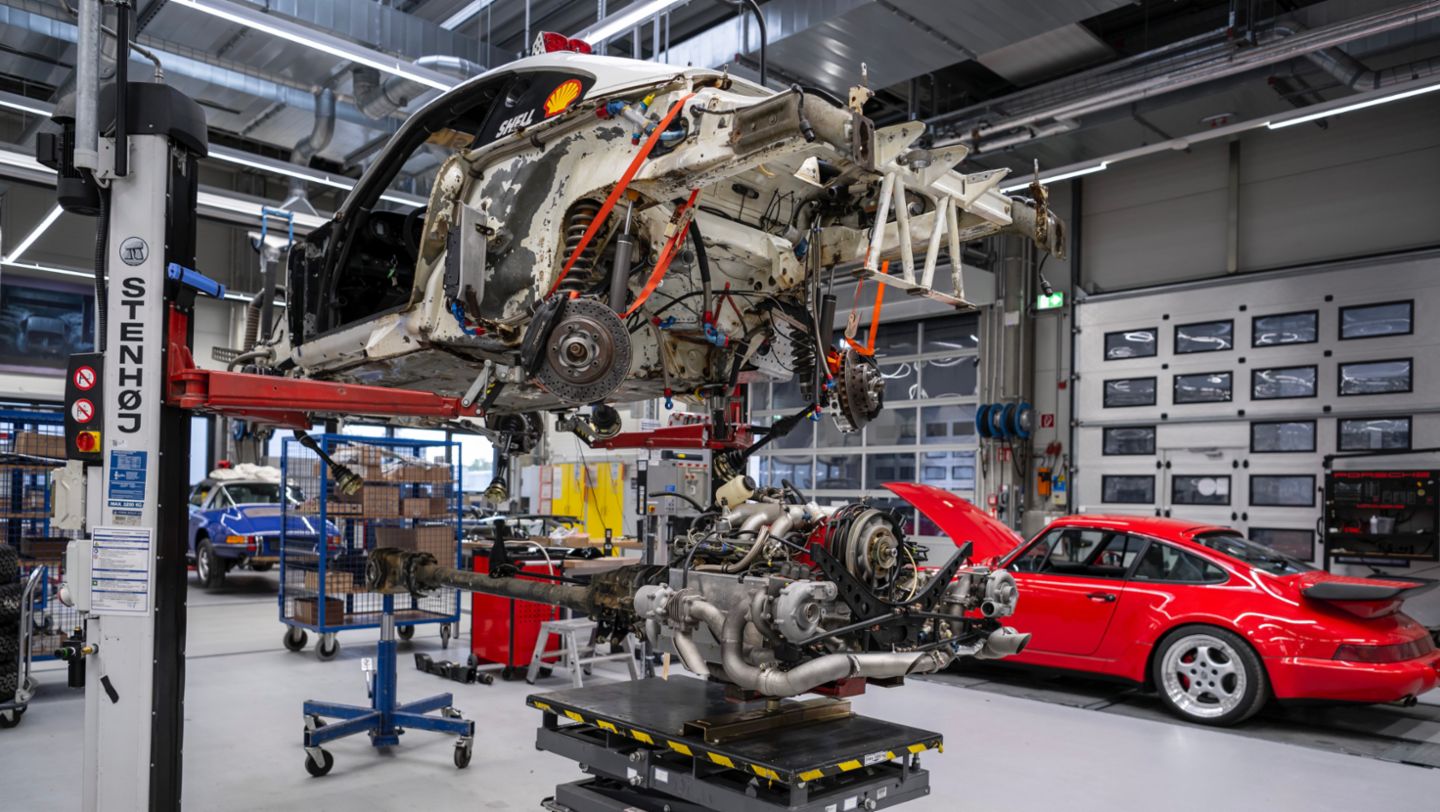
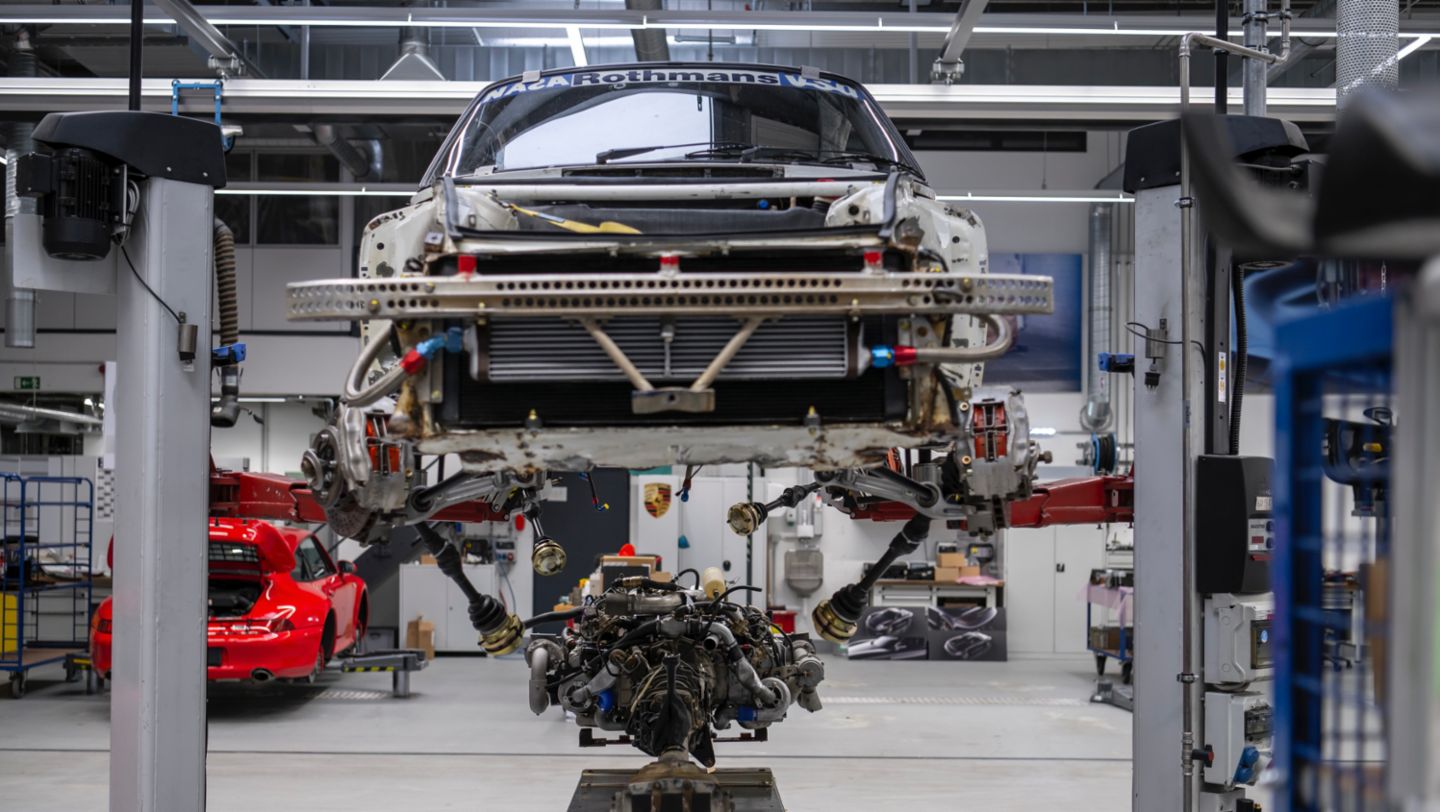
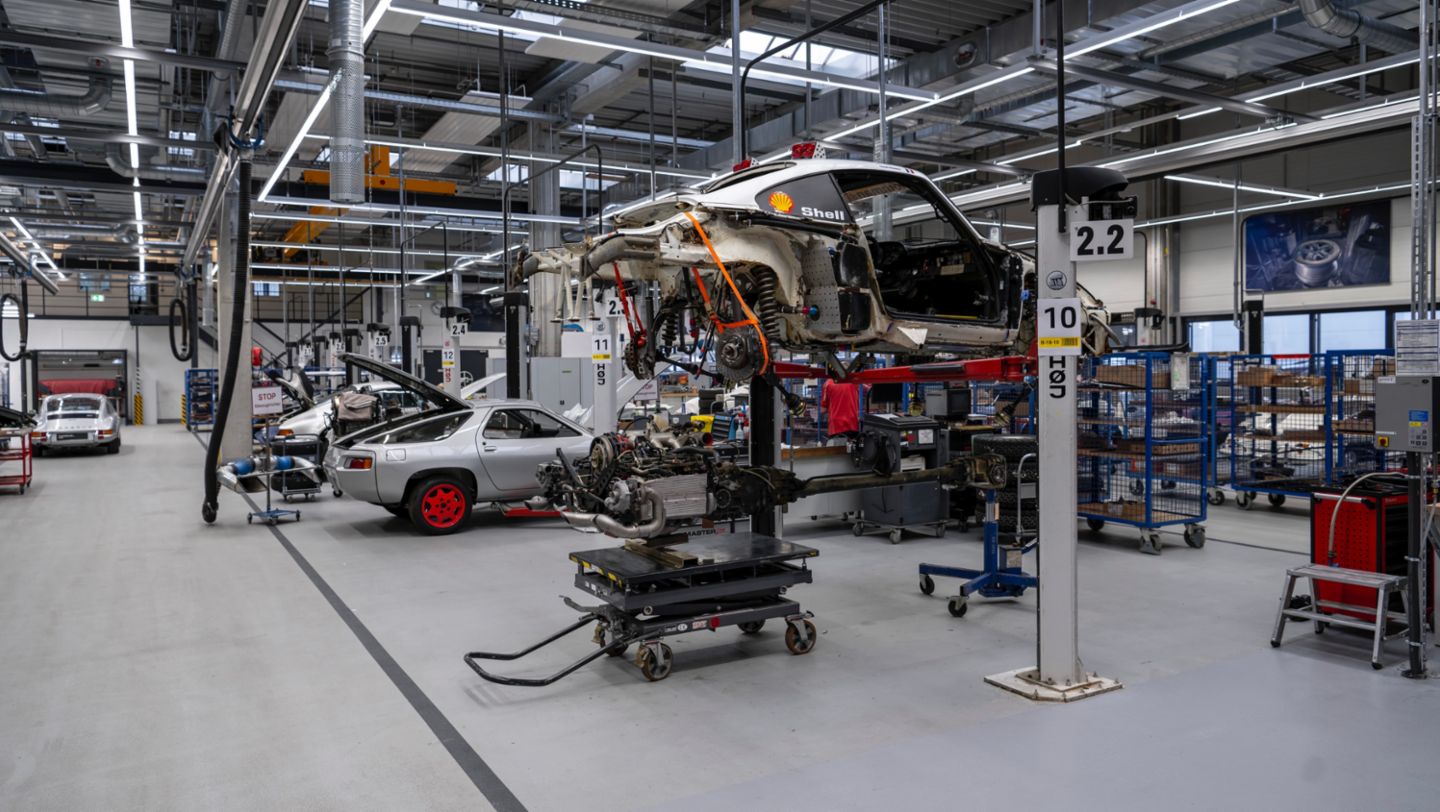
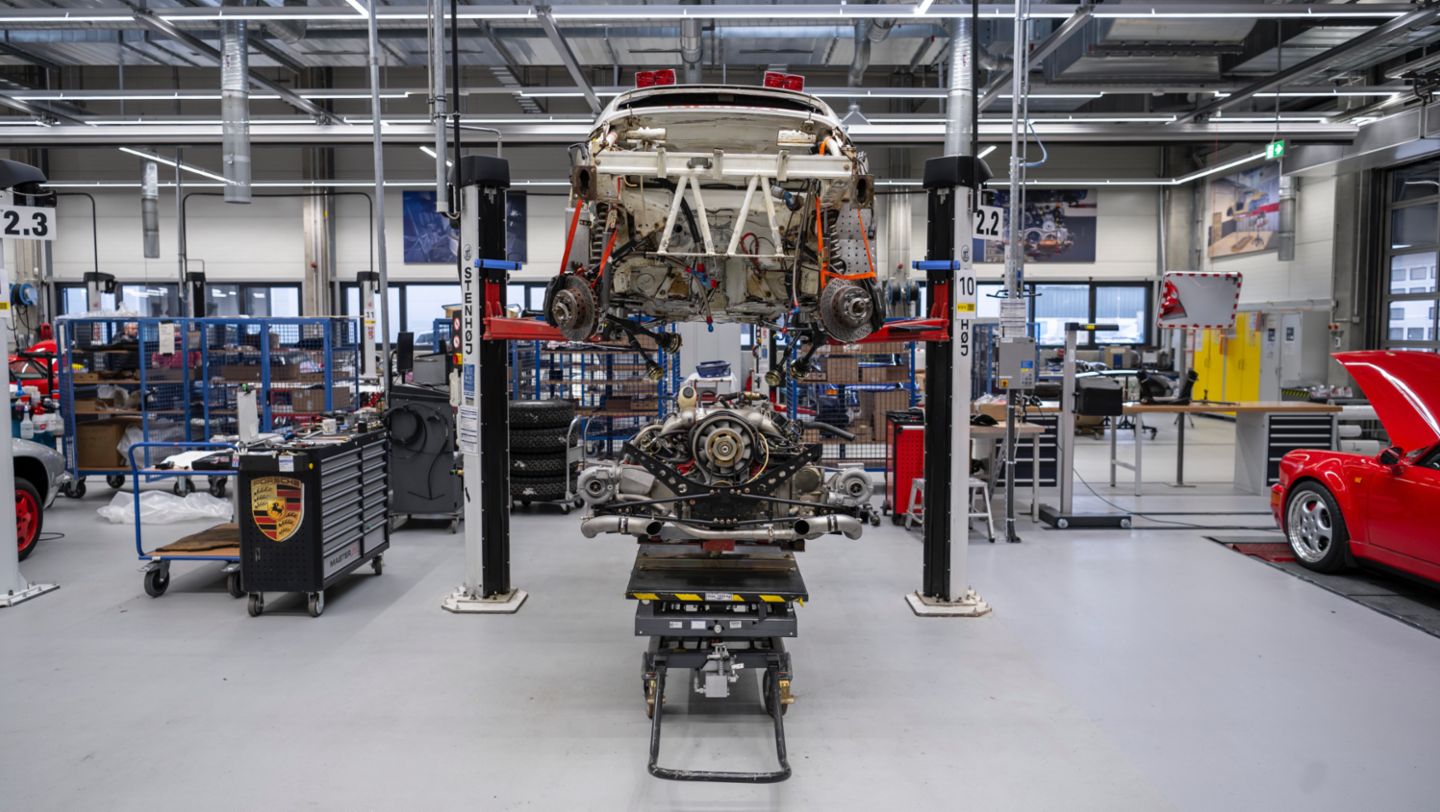
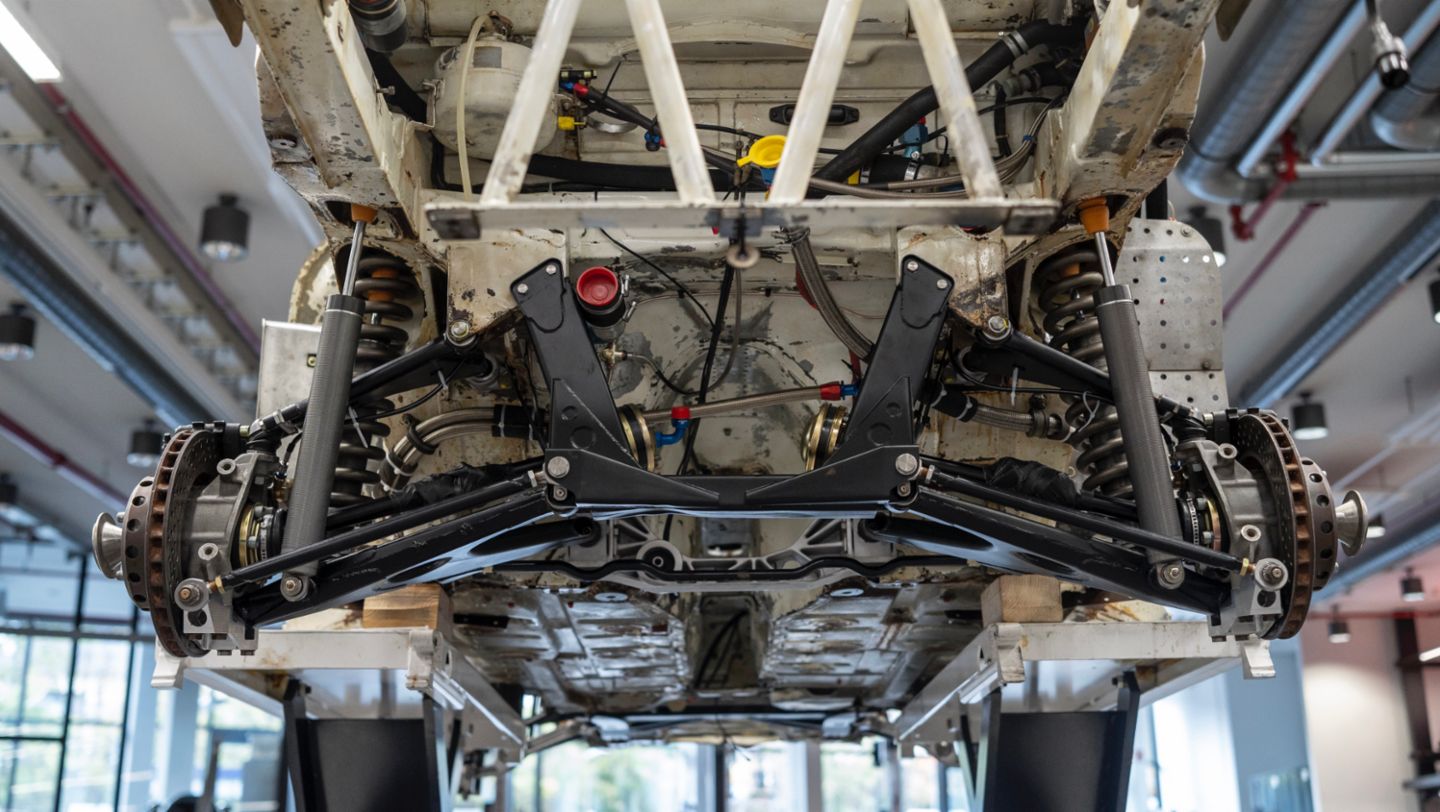
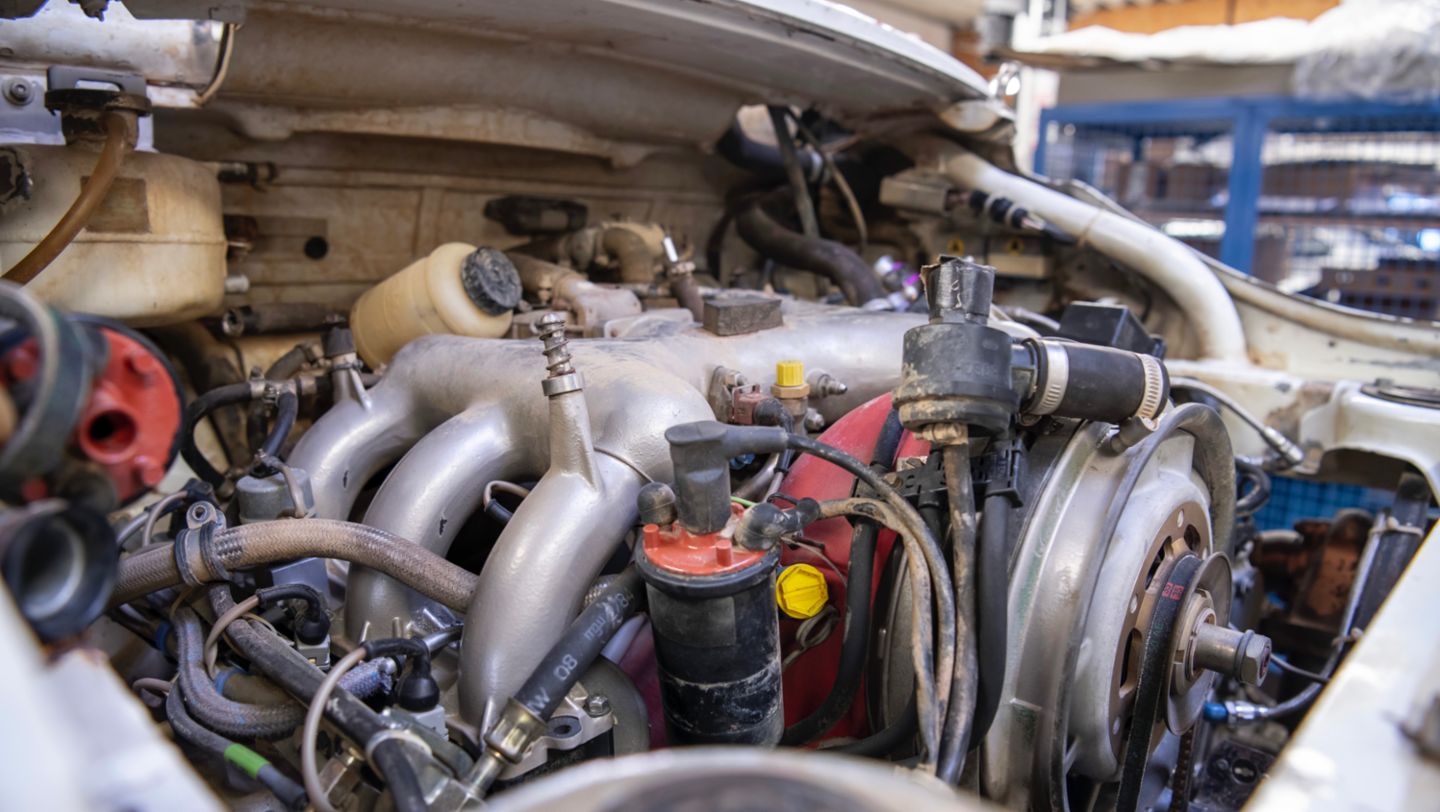

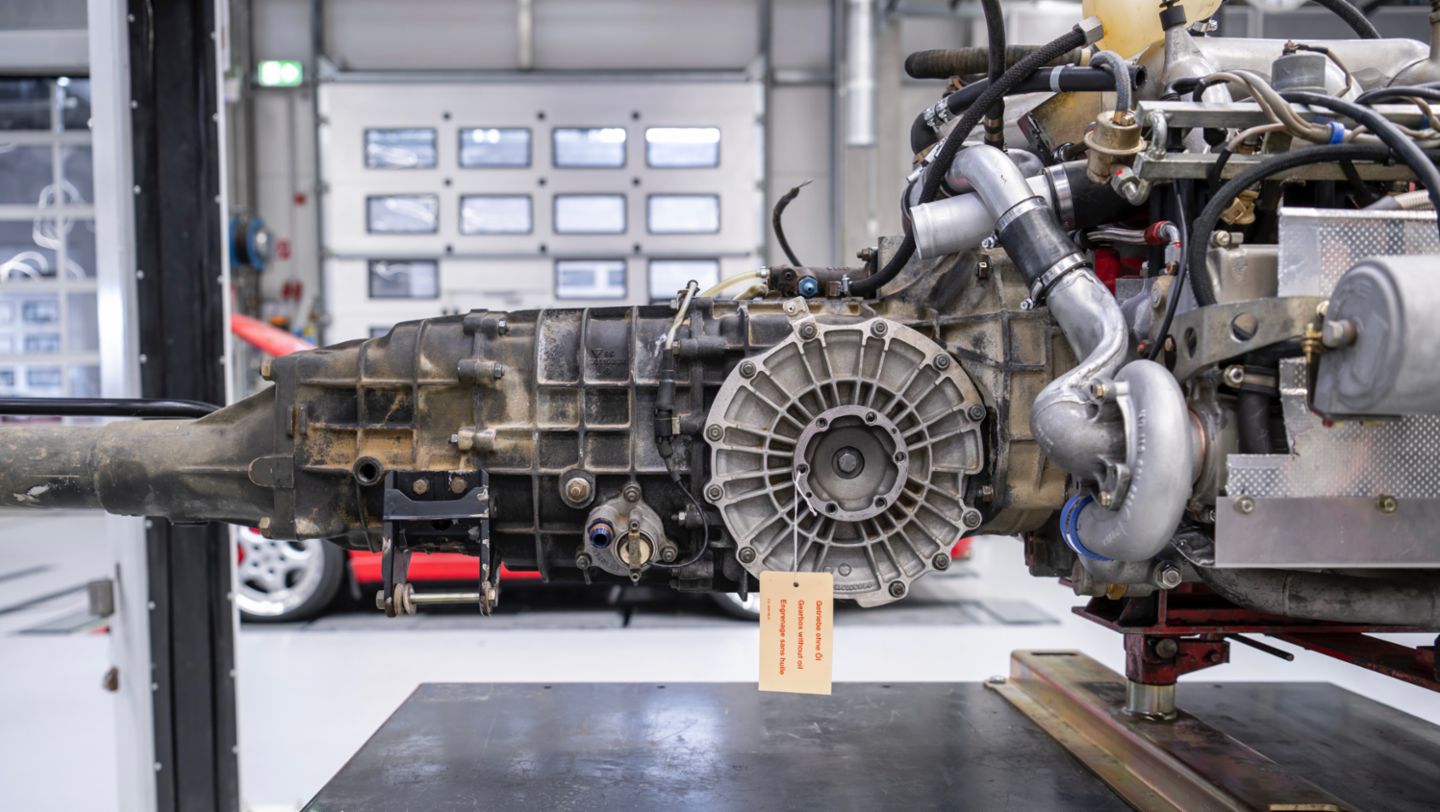
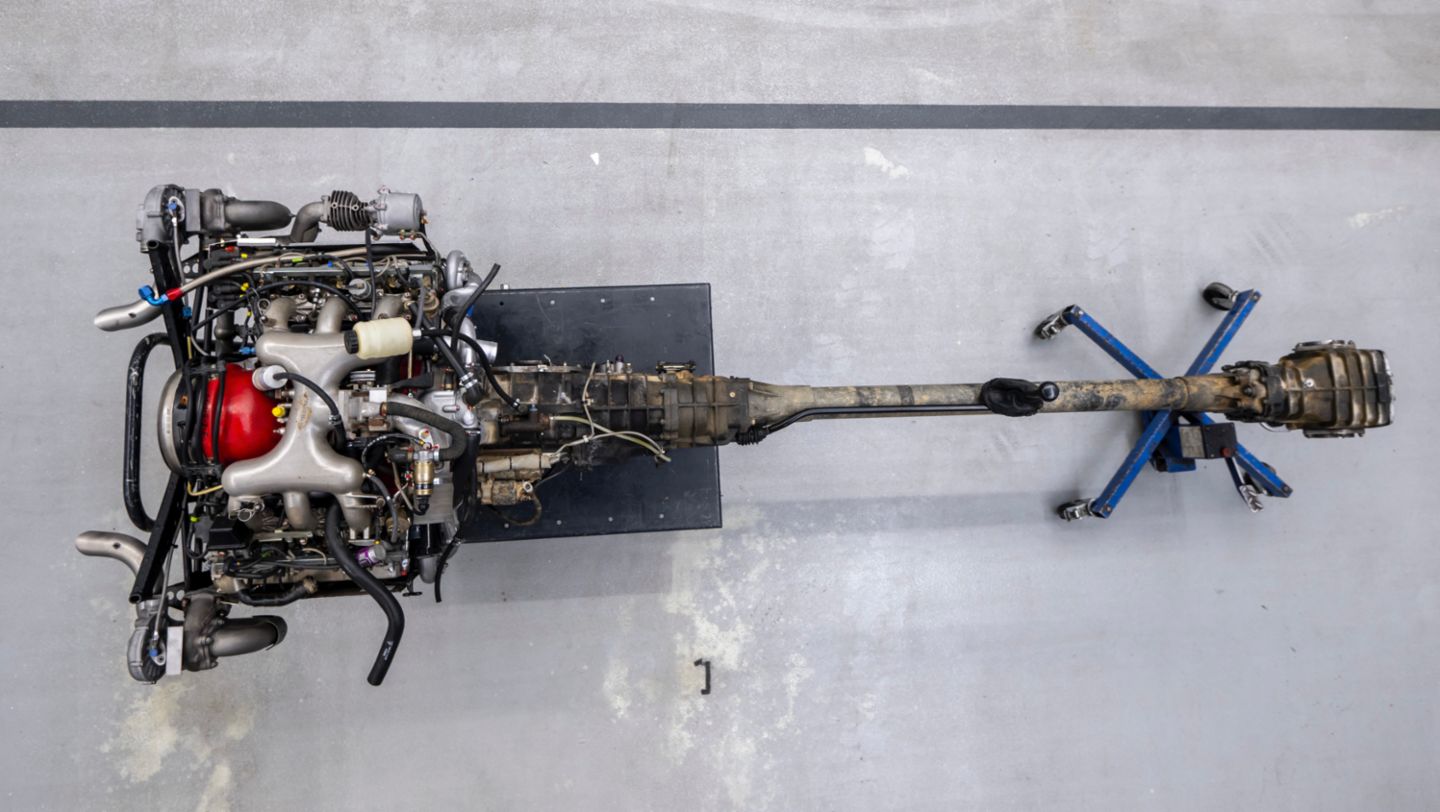
“The 959 Paris-Dakar is a prototype, one of the reasons why its recommissioning is such an emotionally charged affair,” says Uwe Makrutzki, Head of Porsche Classic factory restoration. “In 1986 the car faced a challenge, and now we faced another one.” The teams of Makrutzki and Werner worked hand-in-hand and discussed everything in great detail. Porsche Classic dismantled, overhauled and reassembled the engine, gearbox and drivetrain for the project. All the parts showed little or no damage. “The car was in very good condition, with no major defects or corrosion. As with any restoration with the specific mission of preserving as much substance as possible, the team looked at each part individually and made partial repairs where this was unavoidable. Many of the original parts had near-series production prototype status,” Werner concludes.
For this gruelling long-distance endurance rally, the sports car manufacturer optimised many features during the 1980s, among them the installation of the engine control units (ECUs). These were positioned high up in the car, to enable it to cross rivers without the ECUs being damaged. Porsche also prepared the oil cooler and oil lines under the rear wings for the rally and transferred motorsport genes into the car by perforating the aluminium support. To reduce the weight further still, the sports car manufacturer punched holes into the brake discs and decided on a body, doors and bonnets made of Kevlar. The experts in Stuttgart therefore achieved a comparatively low dry weight for the car of 1,260 kilograms.
Sand and dirt from the African desert
During the 959’s disassembly, the team discovered sand and dirt from the African desert. Since the car’s return from the rally, the body and mechanical parts had never been separated. “As this was not an everyday thing for us, it was fascinating. Muddy dirt showed us today that the 959 Paris-Dakar went through rivers and had experienced water in its interior,” says Werner. Small areas of corrosion where the Kevlar body parts ground against the metal frame as a consequence of the physical pressures of high-speed rally driving were conserved rather than repaired in order to preserve the history of the car.
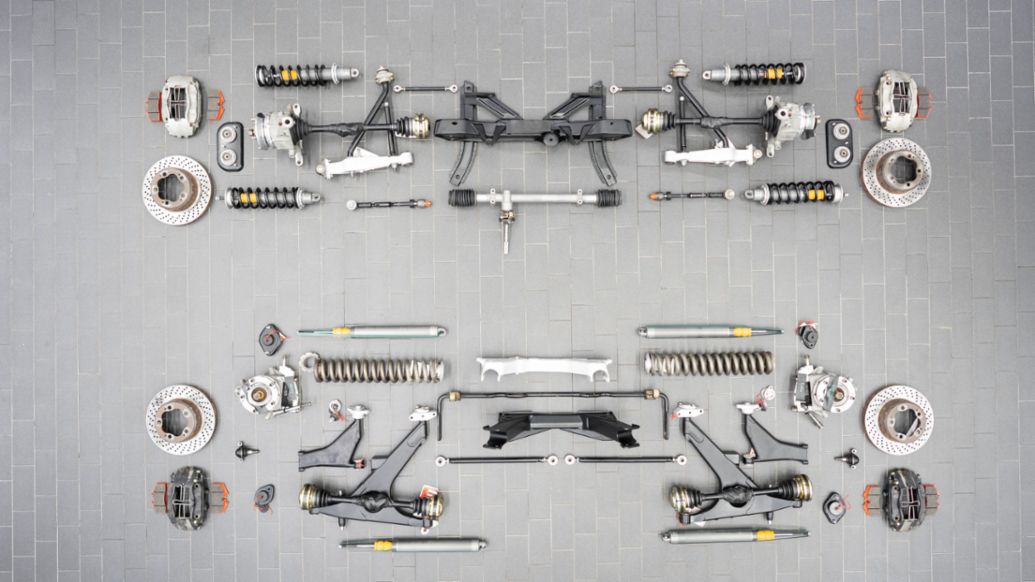
“We even left the cable ties exactly where they were after testing and overhauling all of the parts. After all, the car’s appearance cannot be recreated.” Gearbox expert Klaus Kariegus is also a fan of the African dust on the car and the authenticity it represents. “The car has proven its quality and durability. Even sand and dust from hard racing use could not harm the technology. High-quality materials were also used back then,” says Kariegus. Makrutzki’s team, which consists of four 959 specialists, looked after the functionality of the technology and the conservation of the historical traces from the rallies. “Only by keeping the damage from back then can we tell the story authentically and preserve it,” Werner concludes.
Snow and grit: a spectacular setting for the reveal
To tell the story from 1986 as authentically as possible, the Porsche Heritage and Museum team invited Jacky Ickx to the car’s reveal following its gentle overhaul. The former pilot of the second-placed 959 Paris-Dakar had the honour of being the first person to drive the recommissioned car, in a stone quarry. “In the car the memories came back to me immediately as I remembered the people who made it all possible back then,” he says. The team at the time numbered just 18 people. The team spirit was strong and made no small contribution to the success that followed. “Everyone wanted to drive the car on the road. Then Porsche decided to enter the 959 in a rally in the desert. It’s fantastic that I get to be a part of this story,” says Ickx. The rally was an unbelievable challenge and also the perfect testing ground for all-wheel drive. Nobody expected this success from him and his rally team. “The desert is like the ocean – no two sand dunes and no two waves are the same,” he concludes.
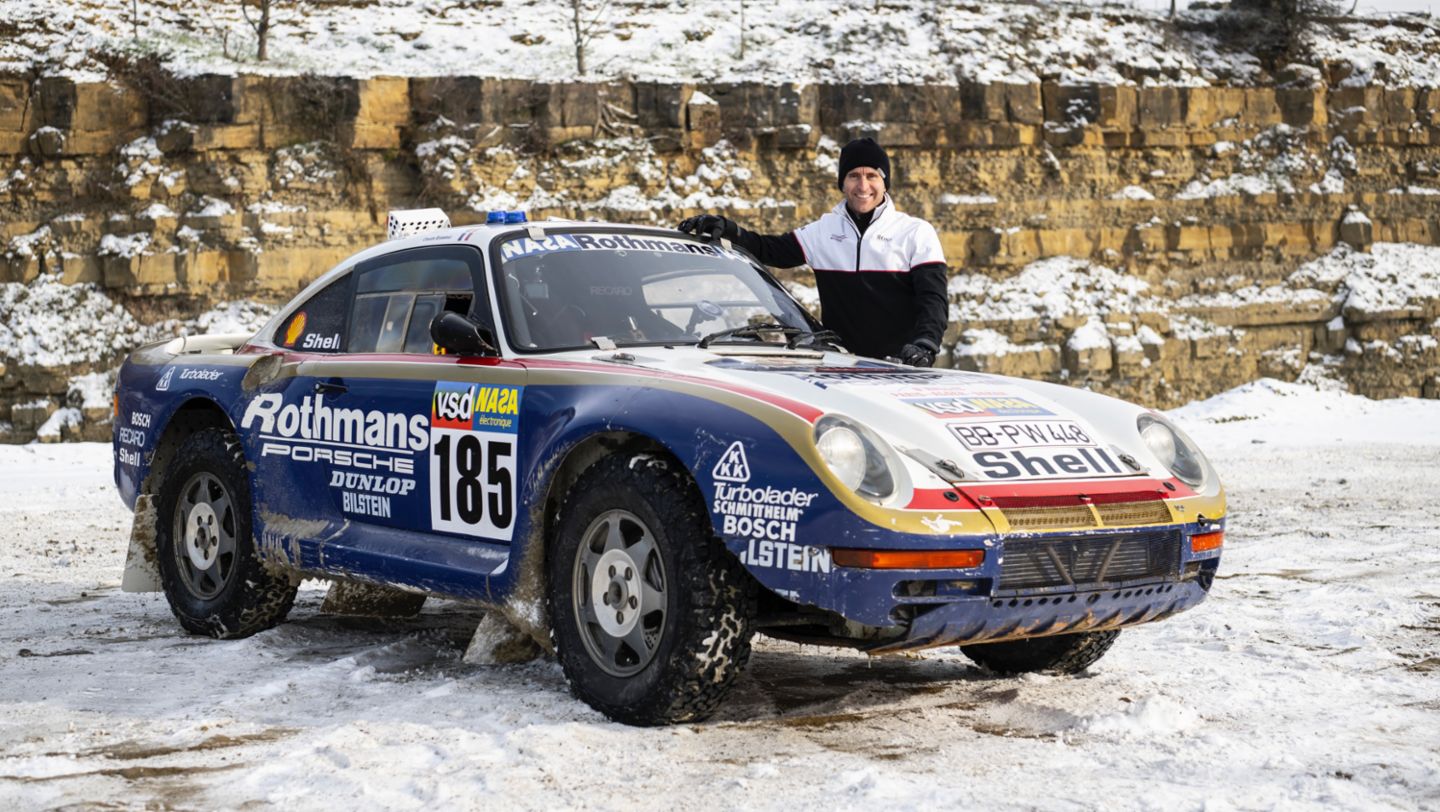
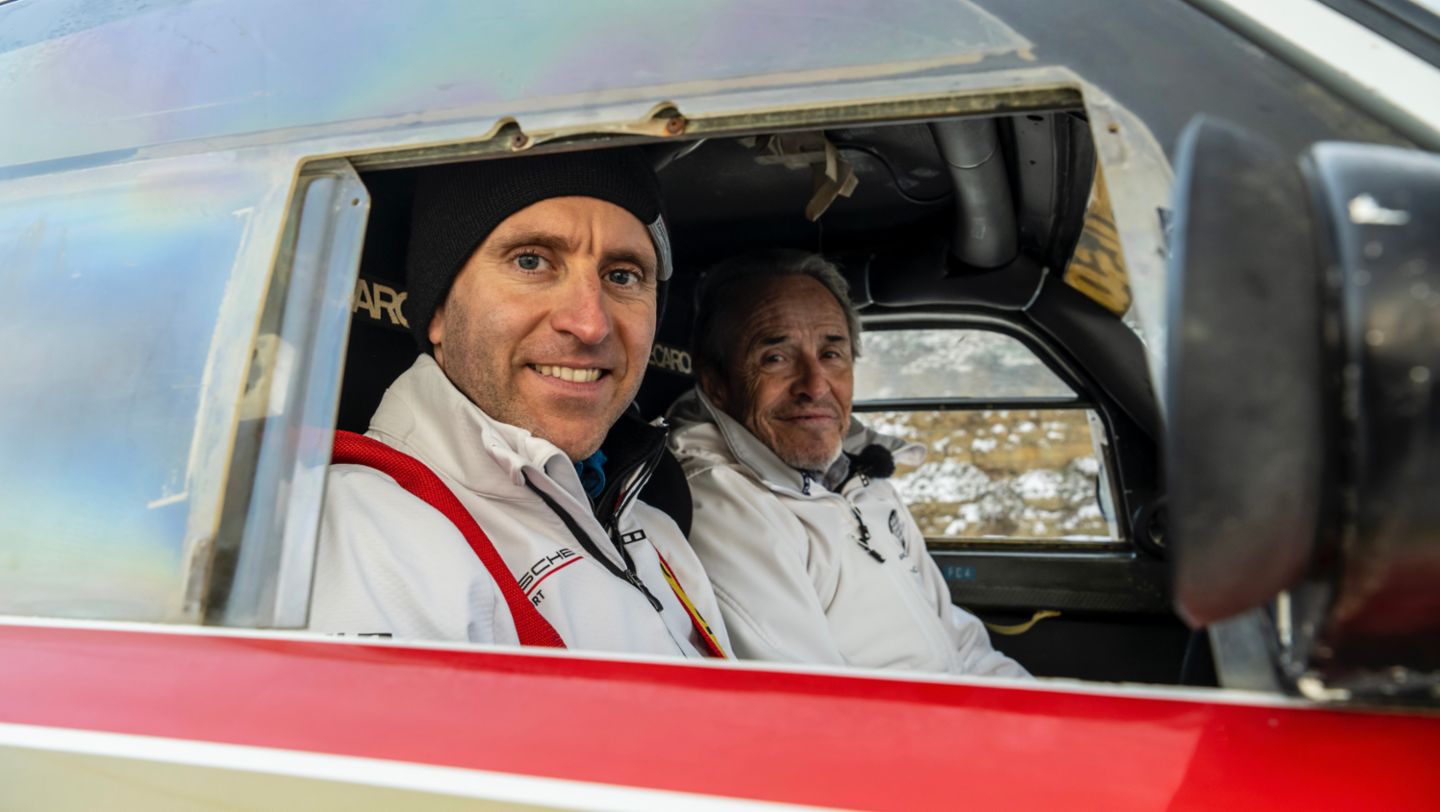
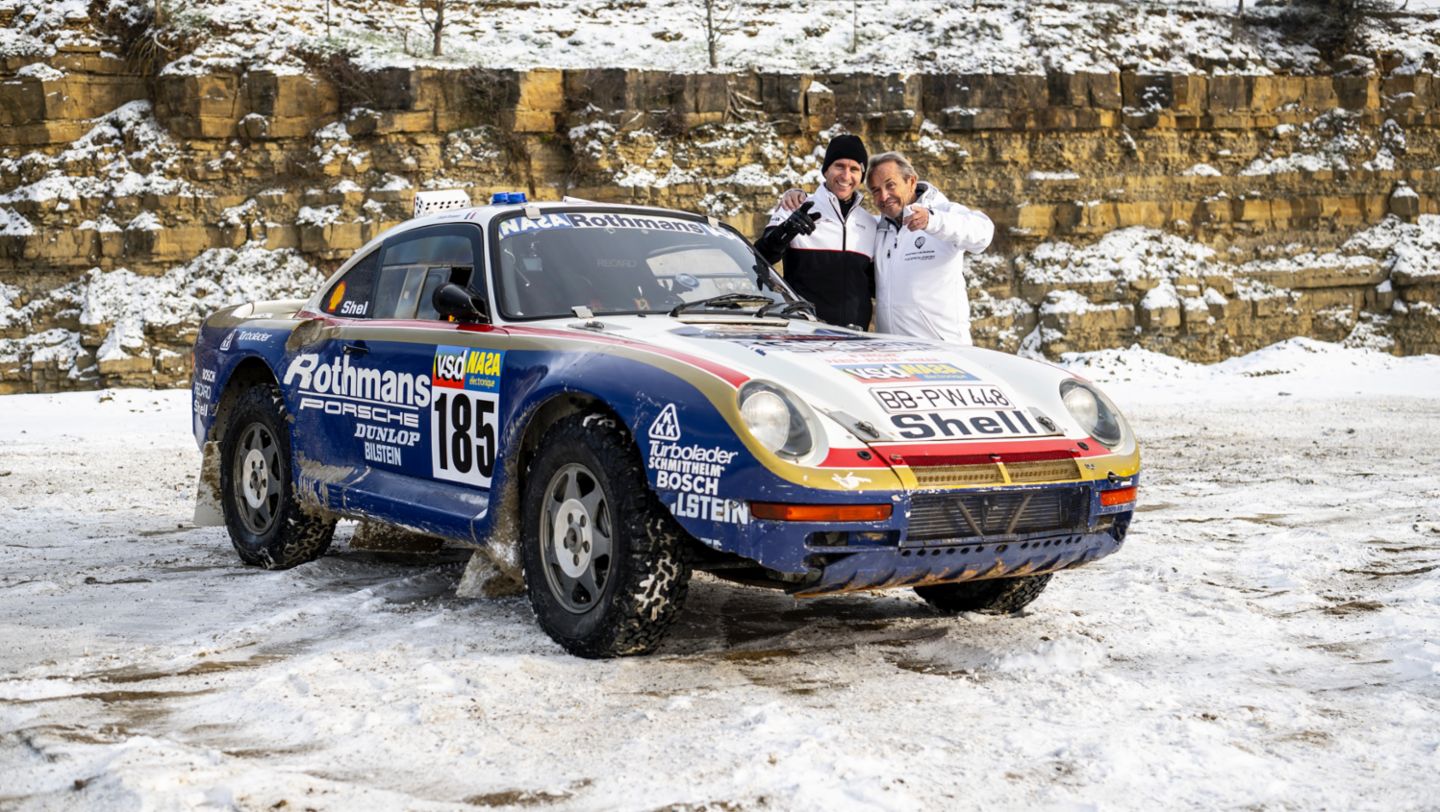
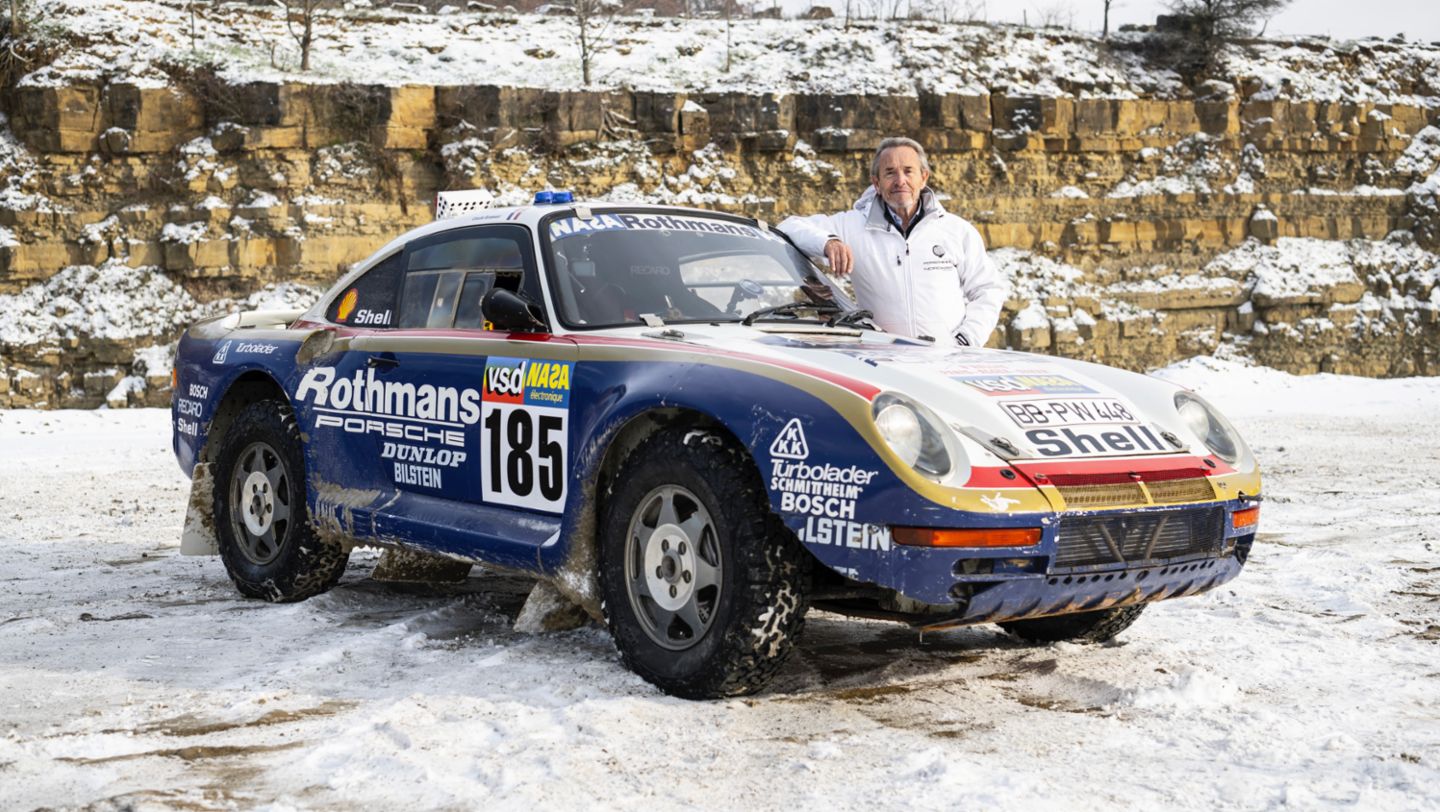
For Le Mans winner Timo Bernhard, who accompanied Ickx at the reveal of the overhauled car, the experiences of his fellow racing driver from 1986 are fascinating. “I remember extraordinary rally scenes in which the helicopters were unable to follow the cars because they were going so fast,” says Bernhard. Almost four decades later, Ickx sums up the first race in three words: “Memories, emotions, passion.” For Kuno Werner, Head of the Museum Workshop, the reveal is also something very special: “The 959 stood idle for many years before being given the opportunity of a whole new reunion with its original driver on this snow and grit. This has been a source of pride for our entire Porsche Heritage and Museum team.”
To be featured at Retro Classics and on the Porsche YouTube channel
From 23 to 26 February, visitors can see the car in Stuttgart at the Retro Classics event, as part of the ‘75 Years of Porsche Sports Cars’ special exhibition in the atrium / east entrance to the exhibition centre. For those unable to visit in person, exciting insights into the recommissioning process can still be enjoyed. A camera team accompanied both the Porsche Heritage and Museum and Porsche Classic teams leading up to the recommissioning. The first part of the ‘959 Paris-Dakar’ documentary will be available in full from 1 February 2023, on the Porsche YouTube channel. Five more films will follow on 3, 5, 7, 9 and 11 February. Viewers can look forward to exciting insights into the original condition of the car, the dismantling of the engine, the bodywork, the overhaul and reinstallation of the engine, and the overhauled car’s first drive. Information and trailers for all further episodes can be found on Facebook and Instagram @porsche.museum.
Info from Porsche NewsRoom
